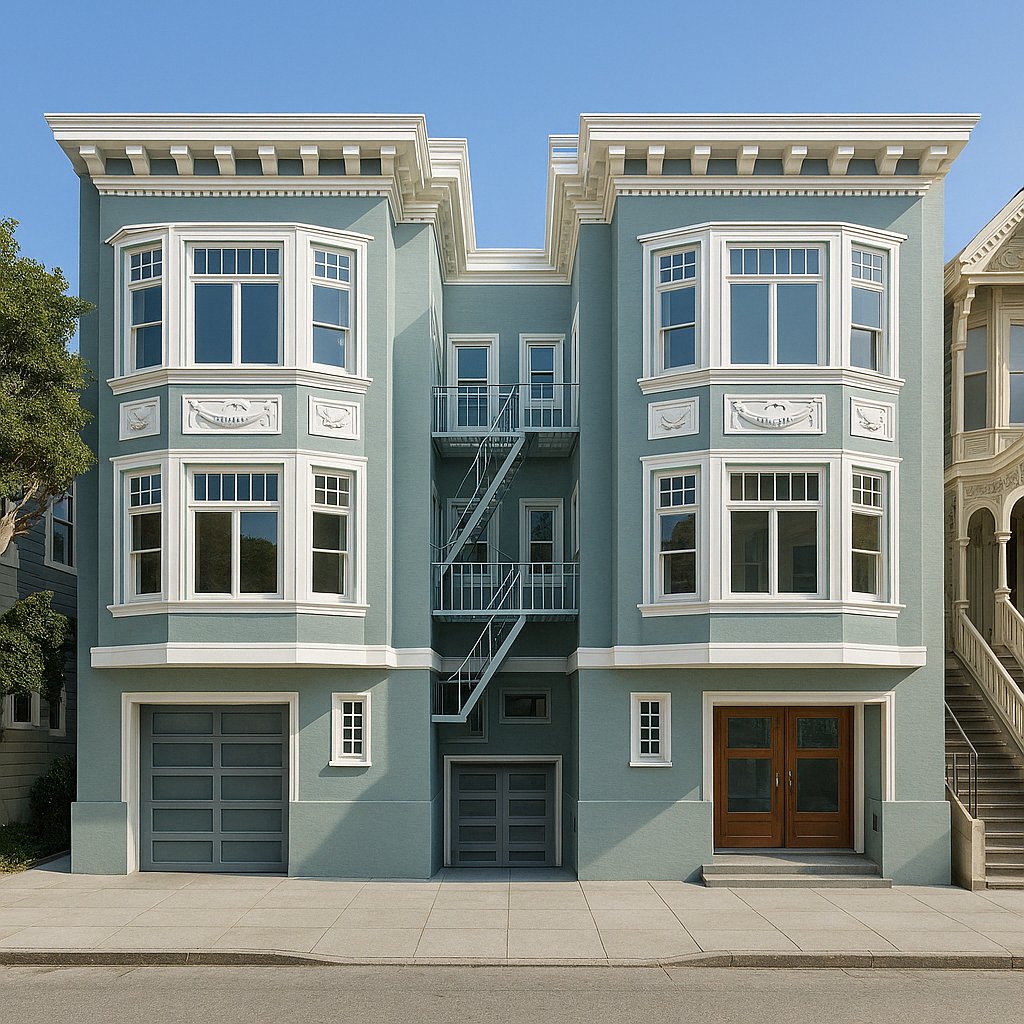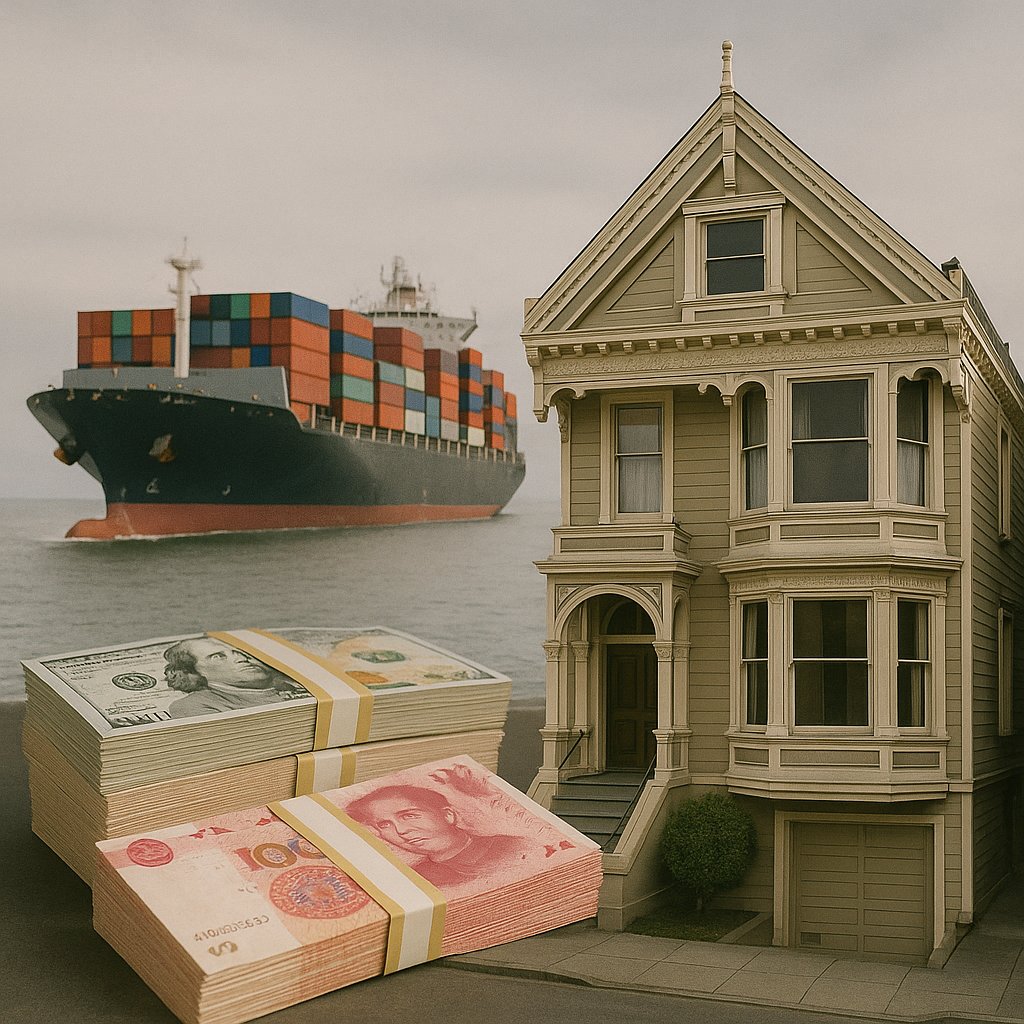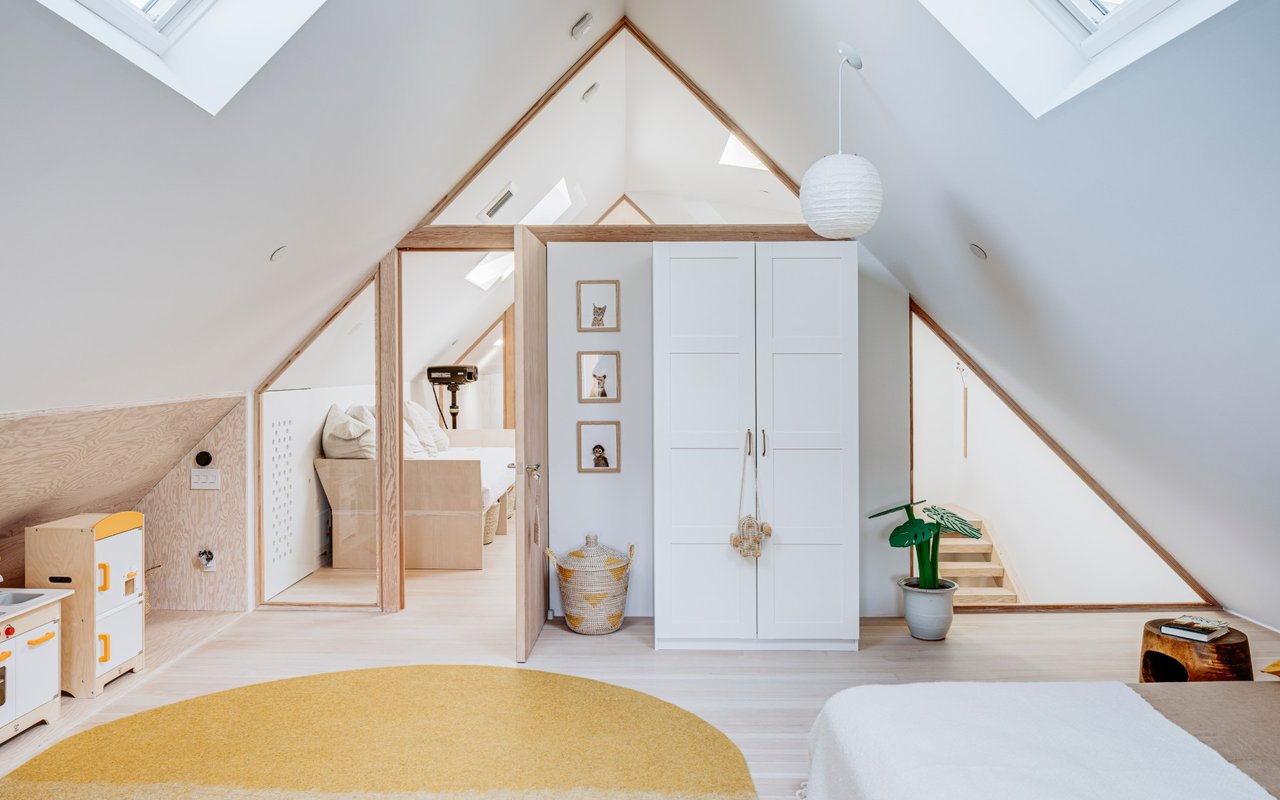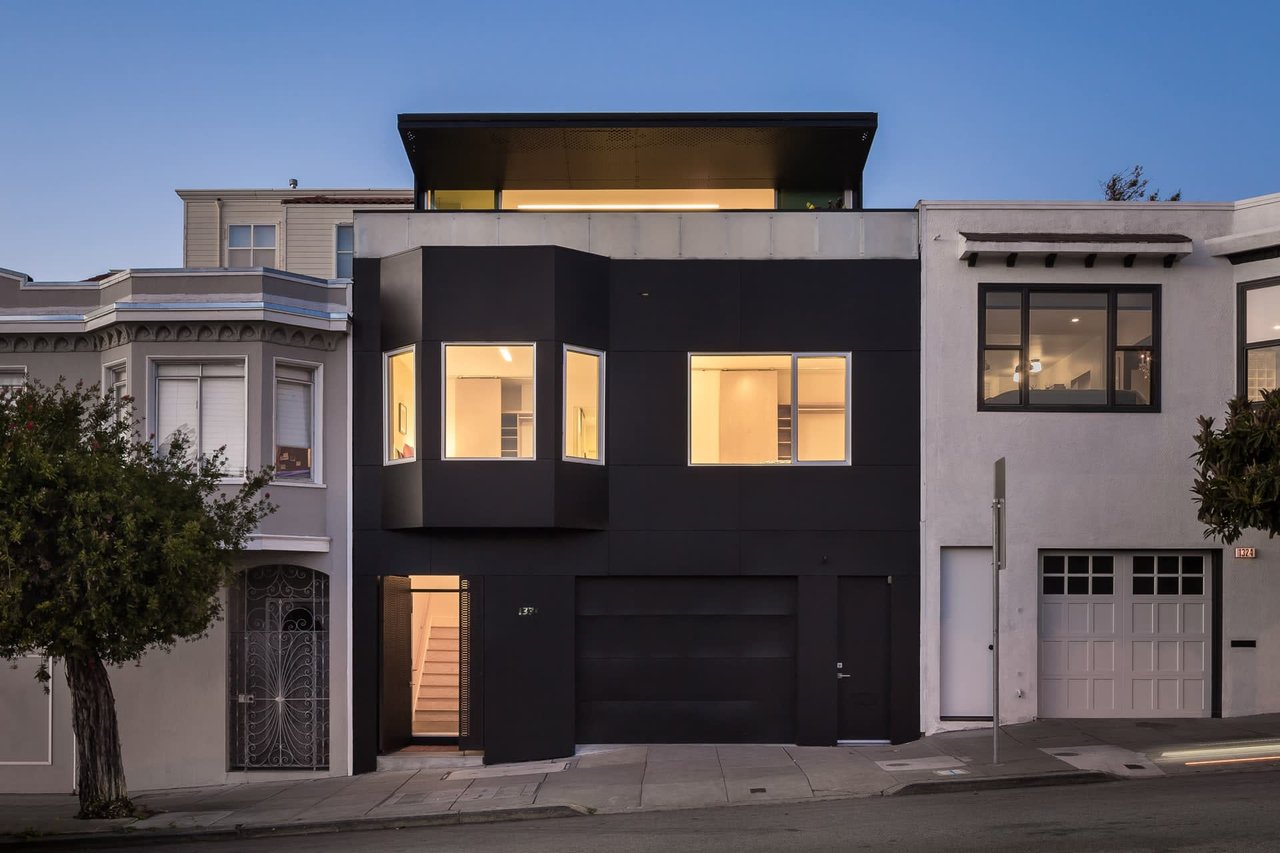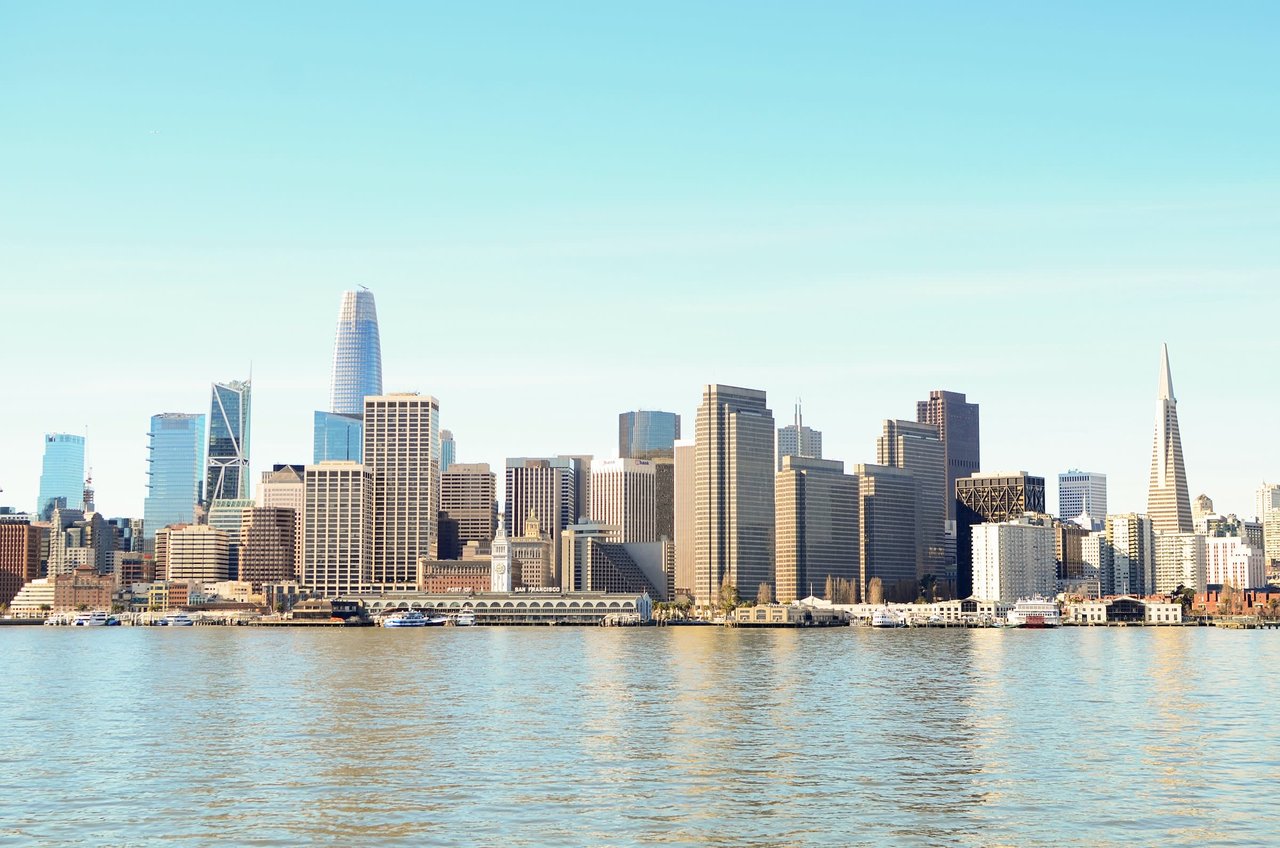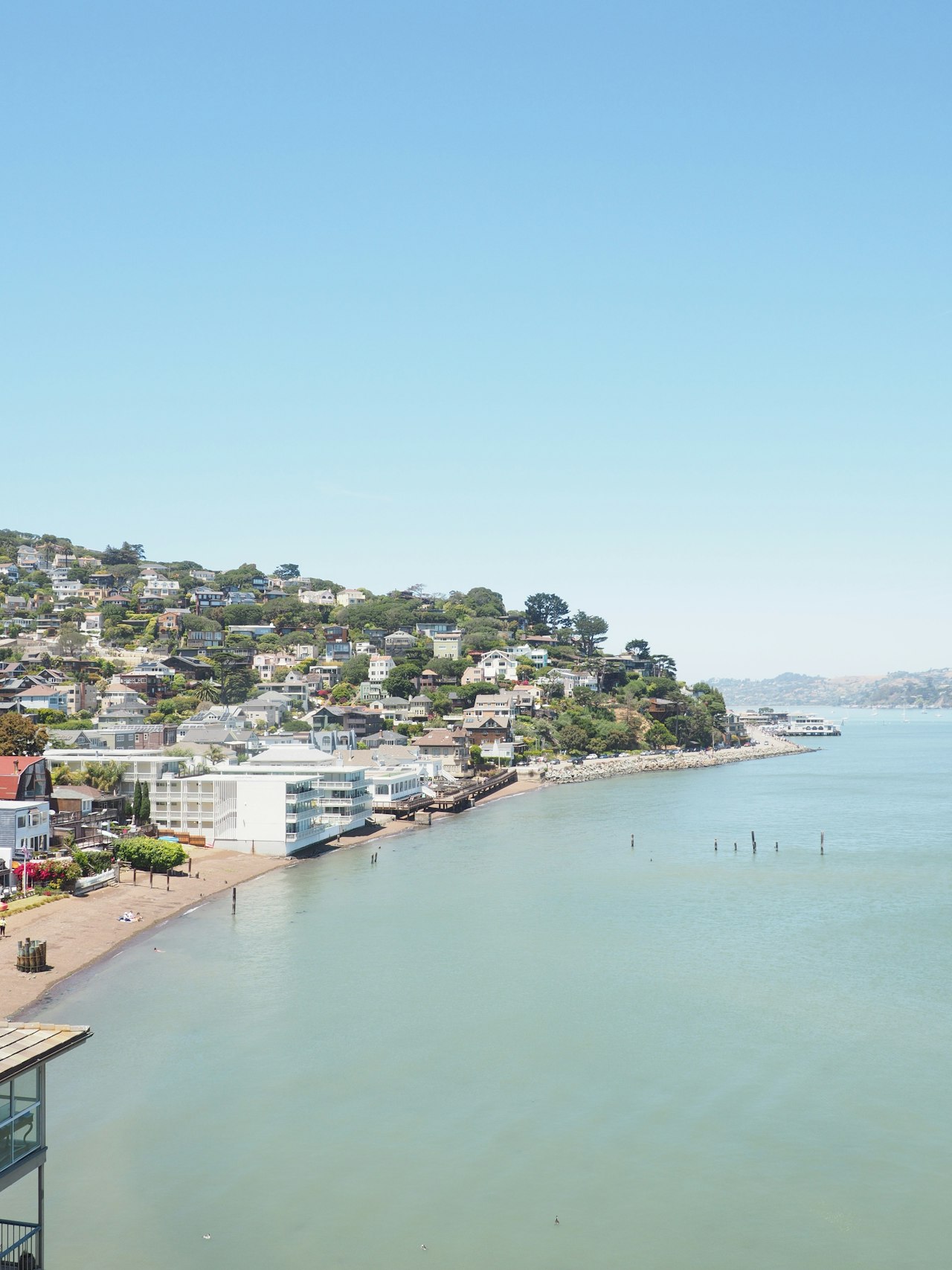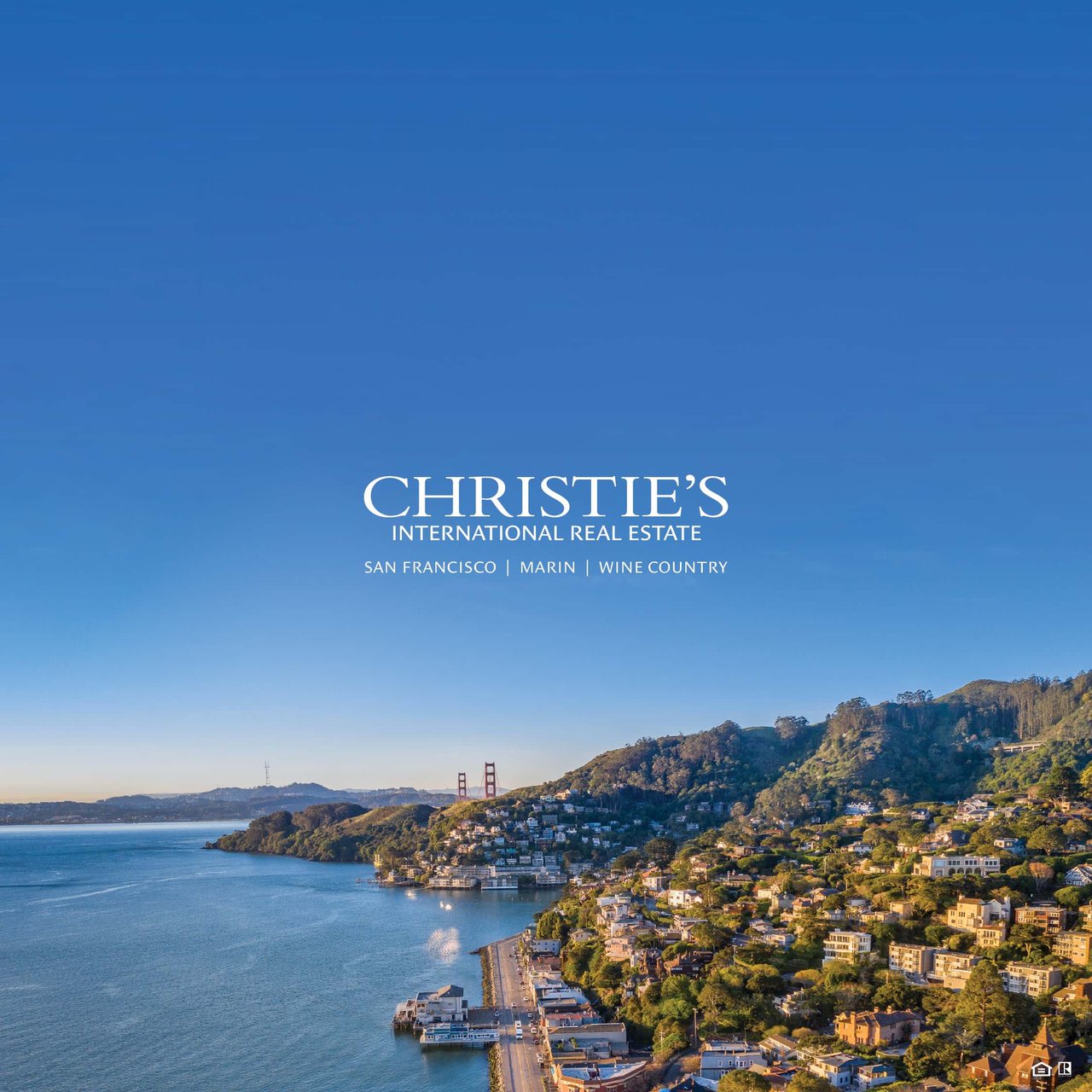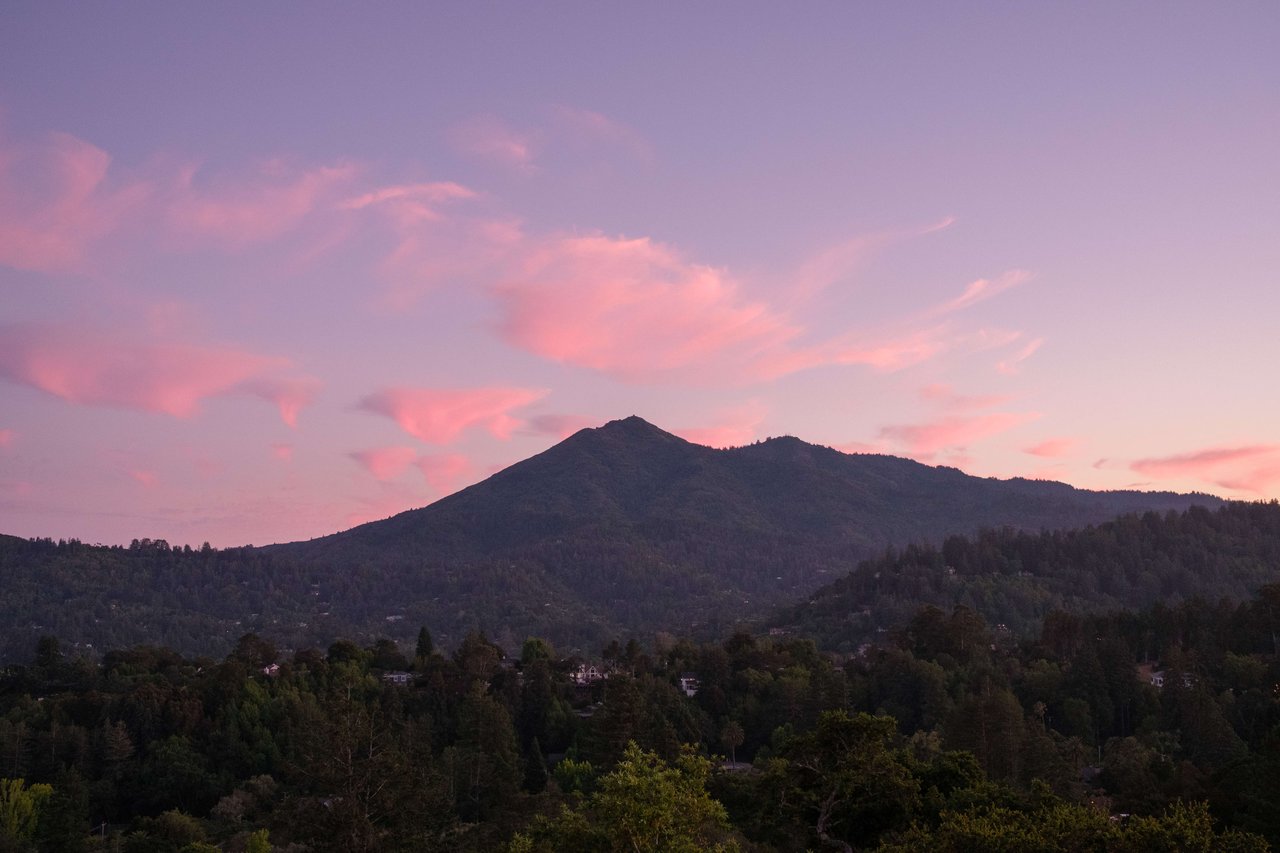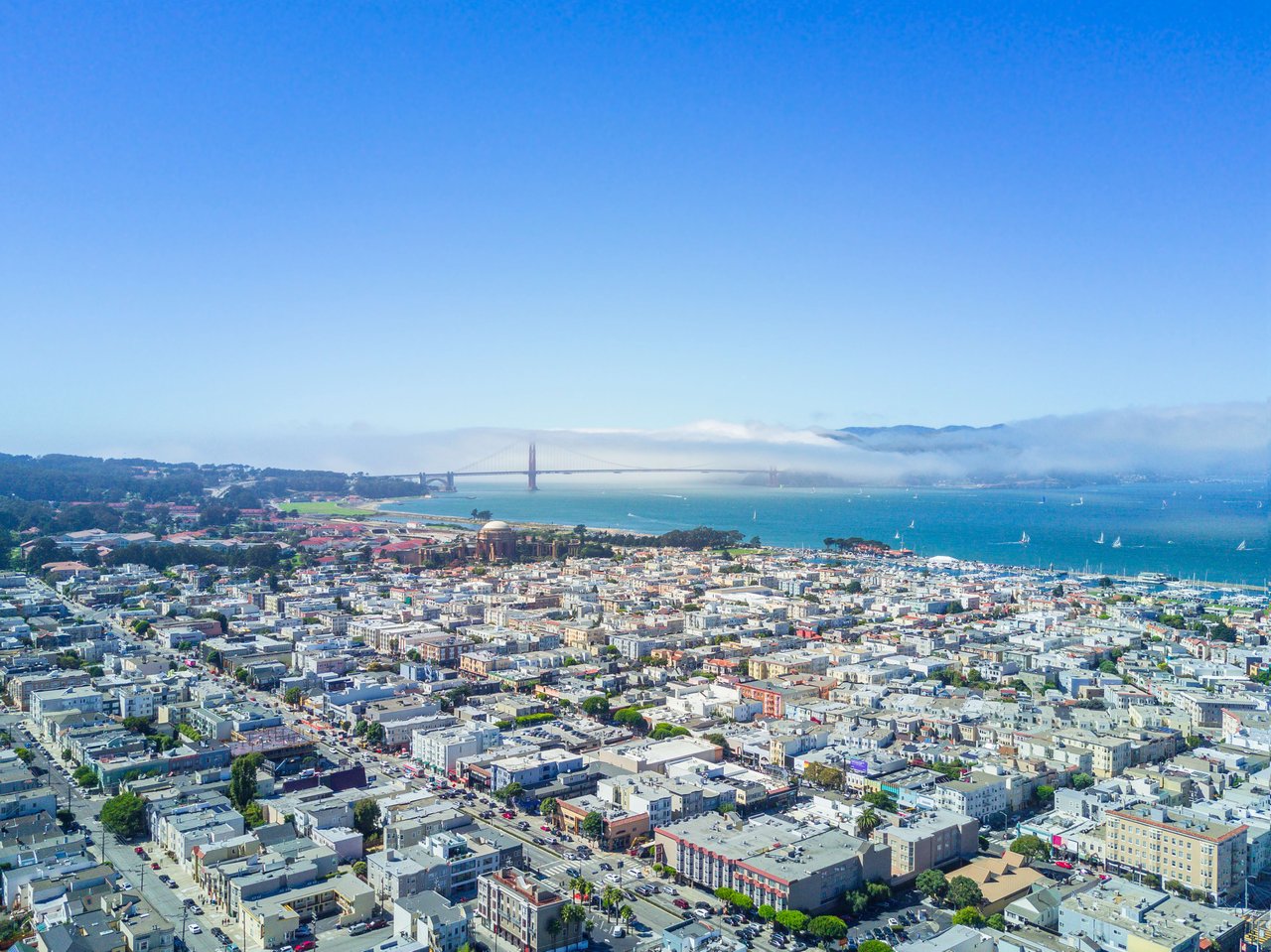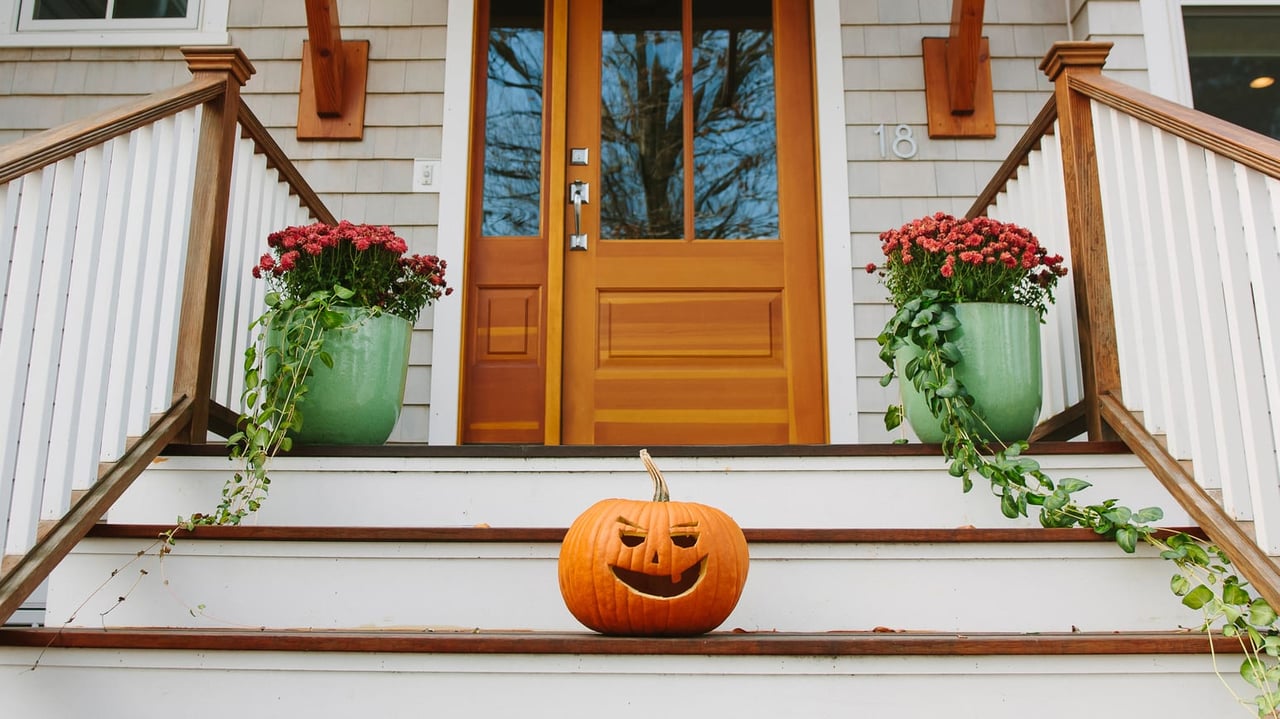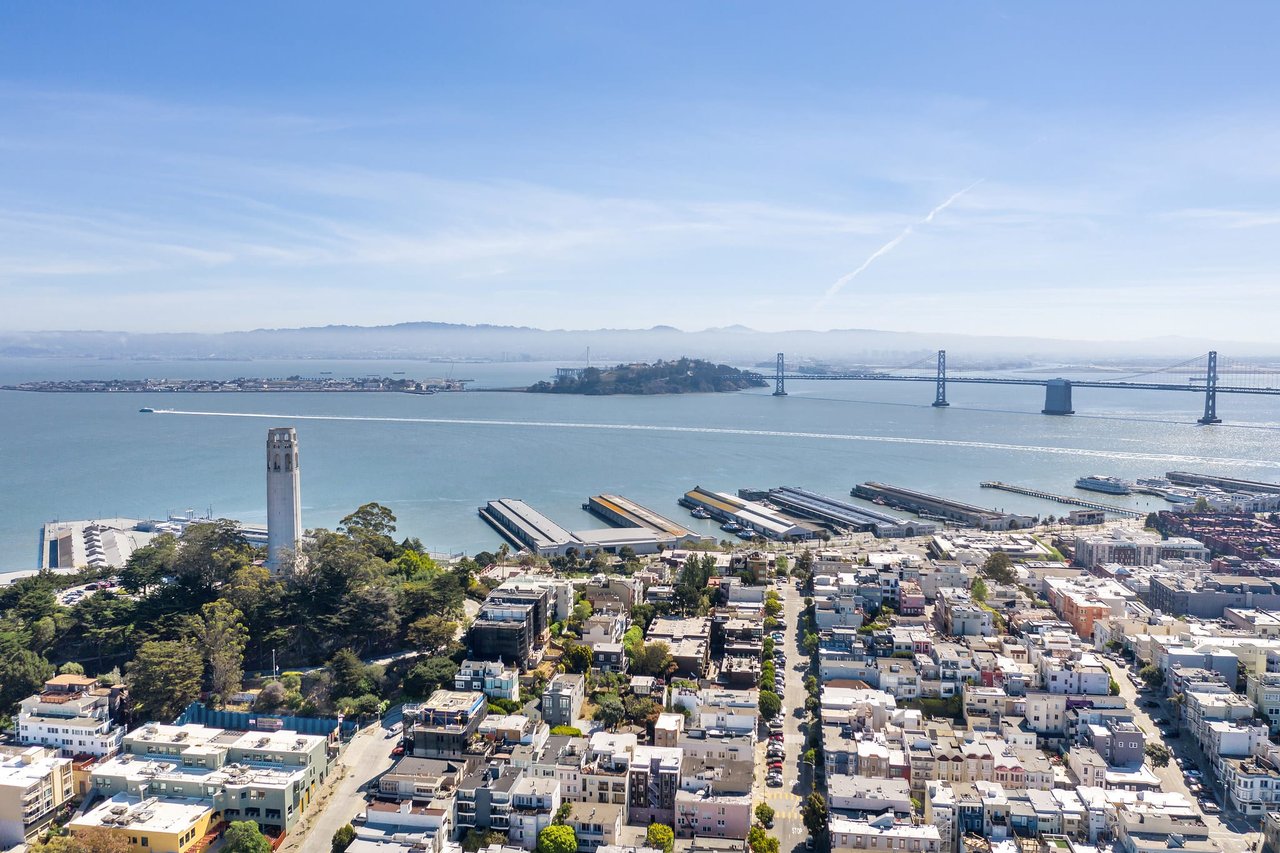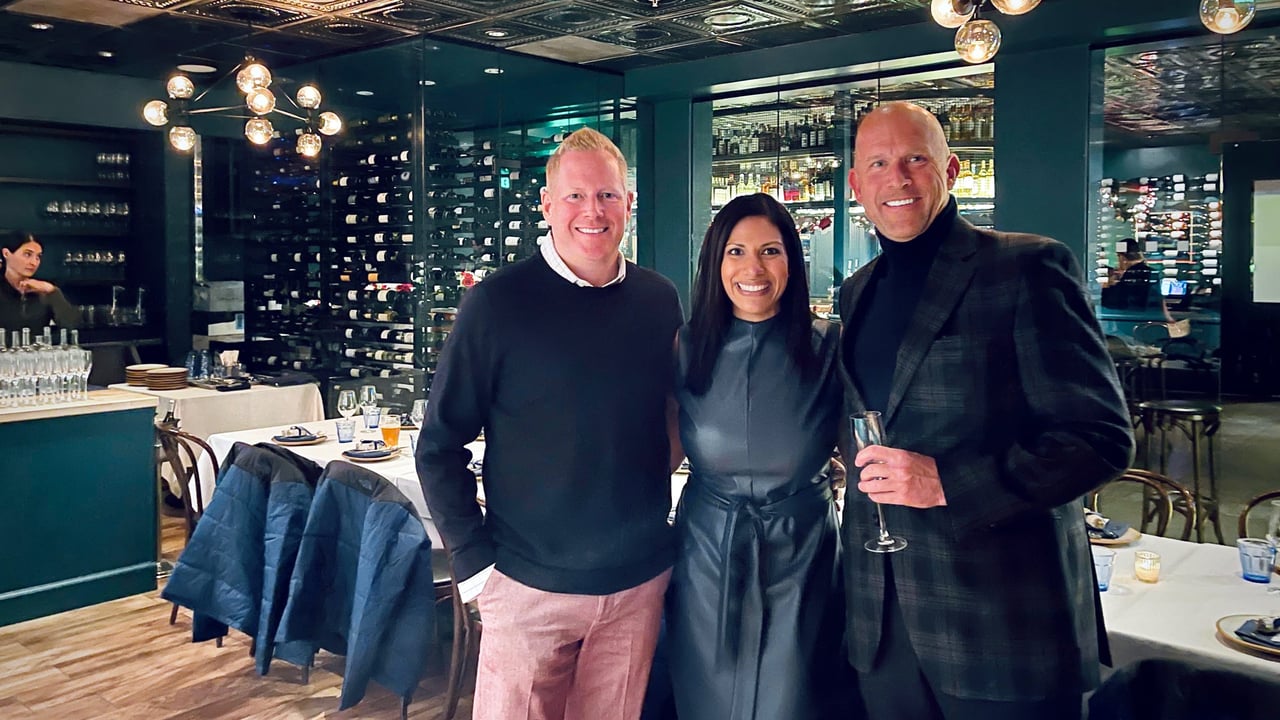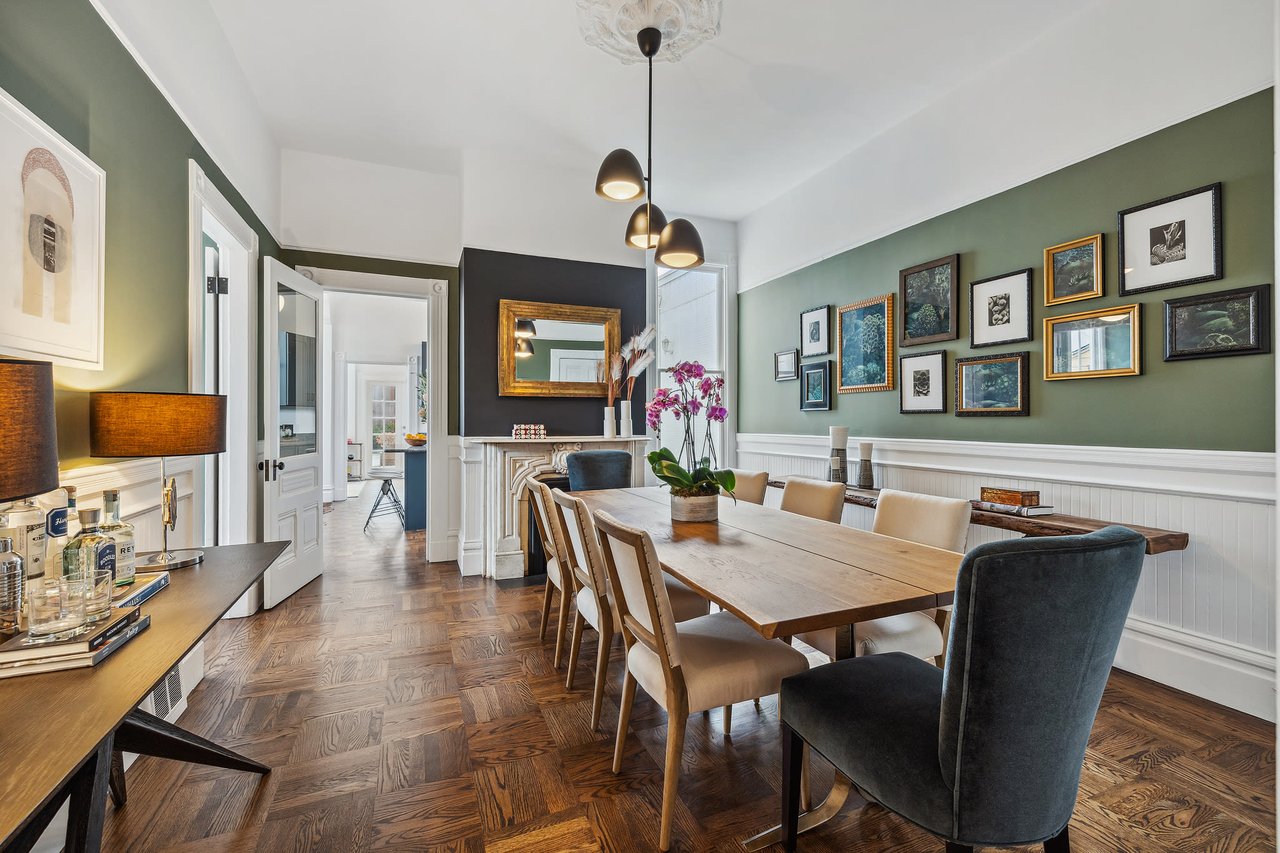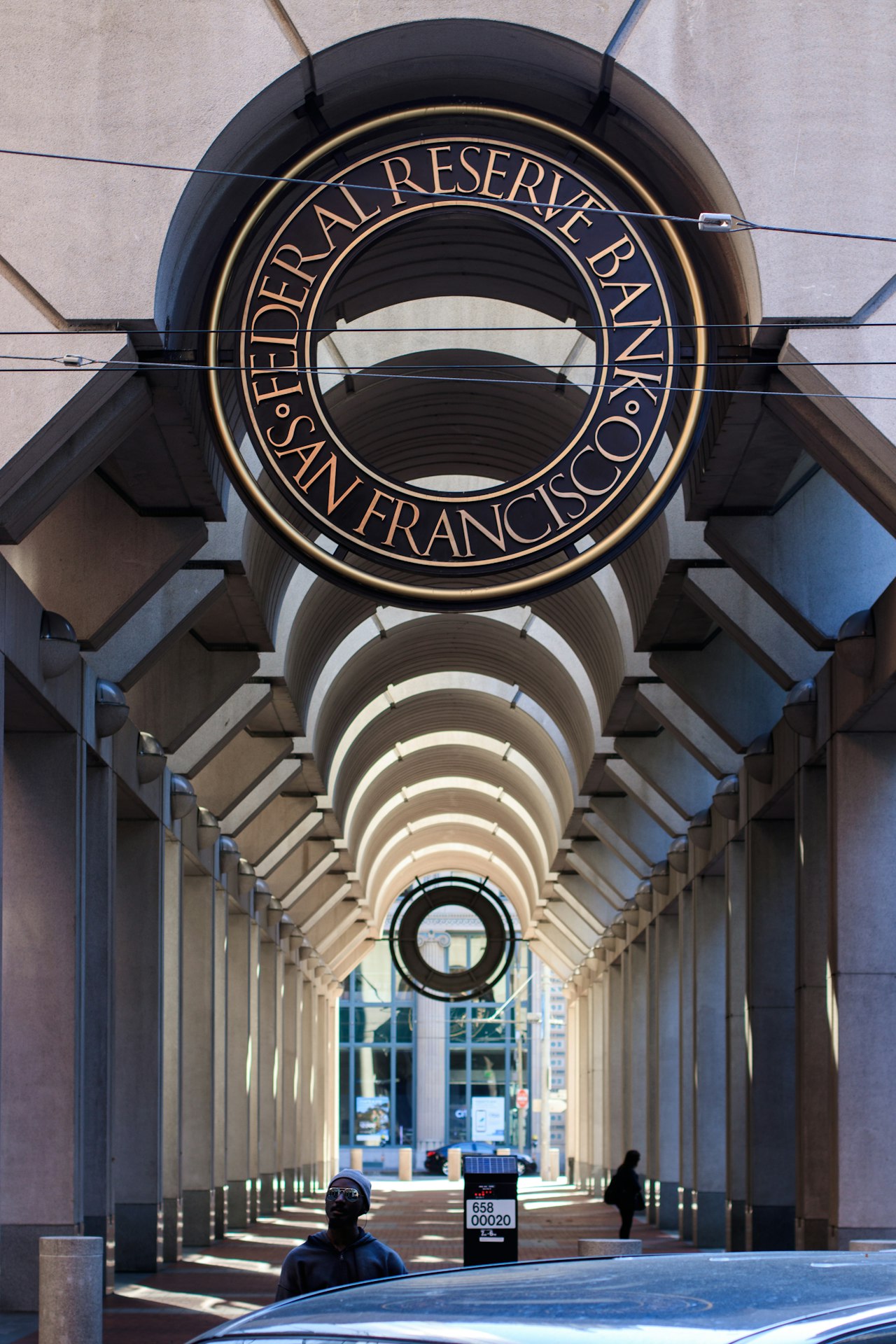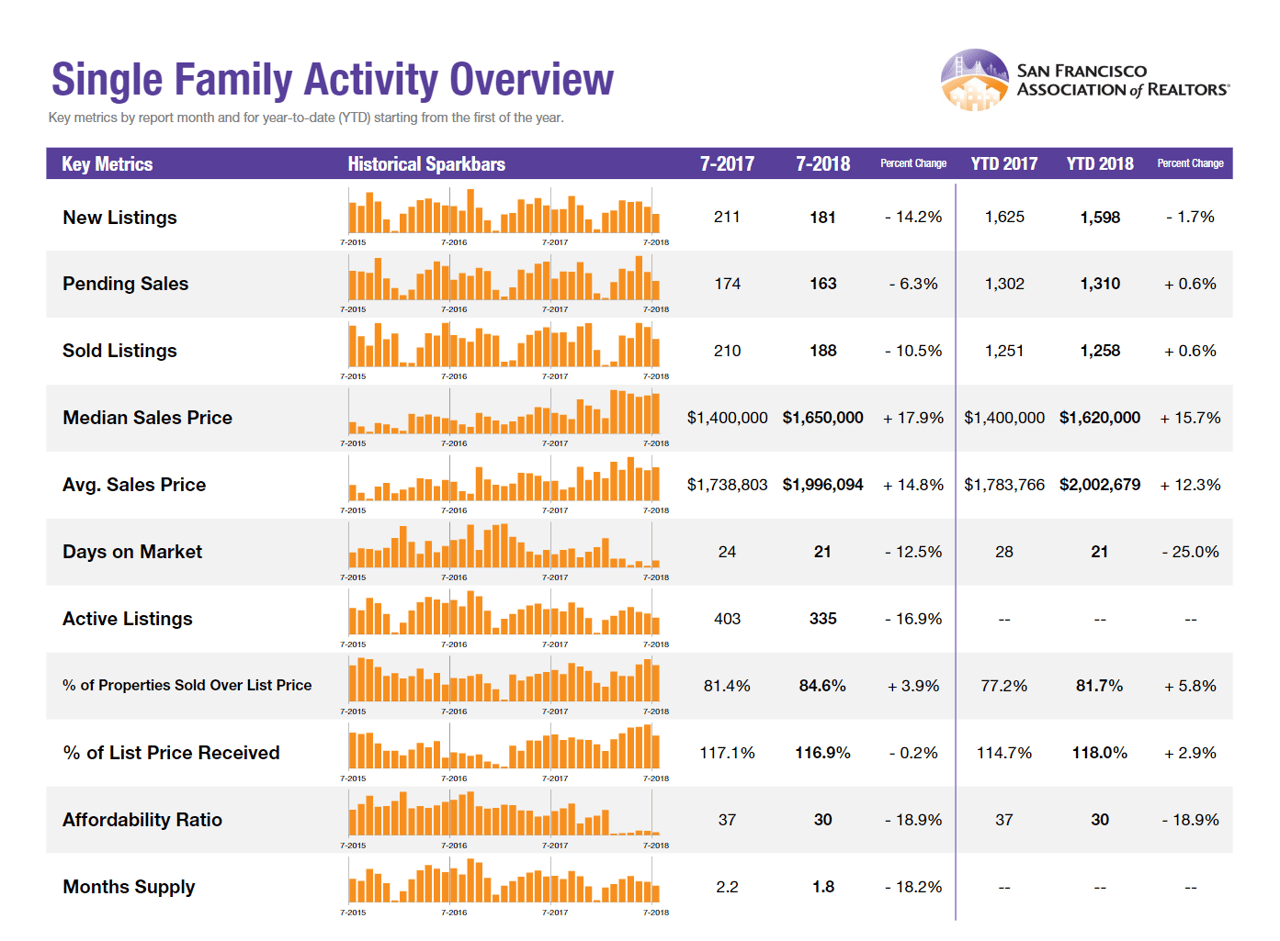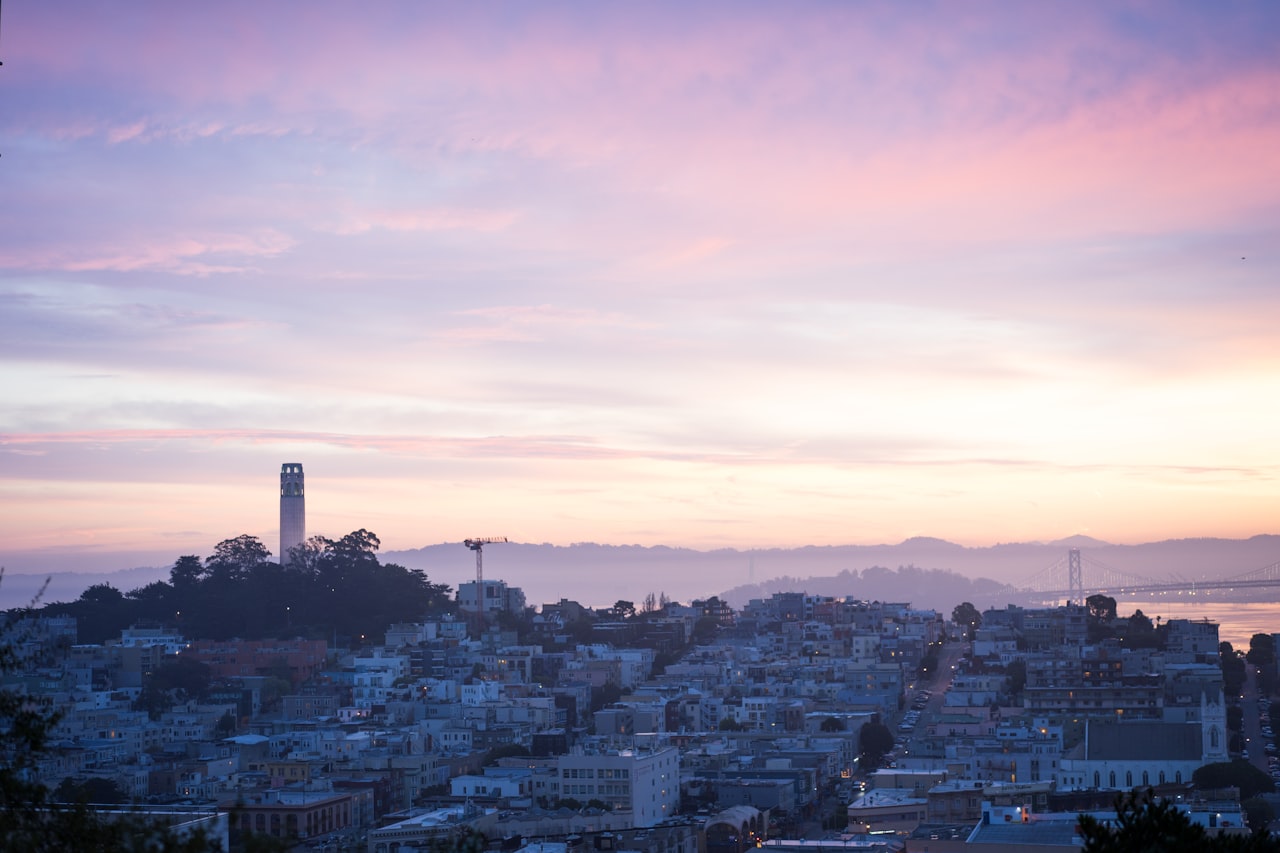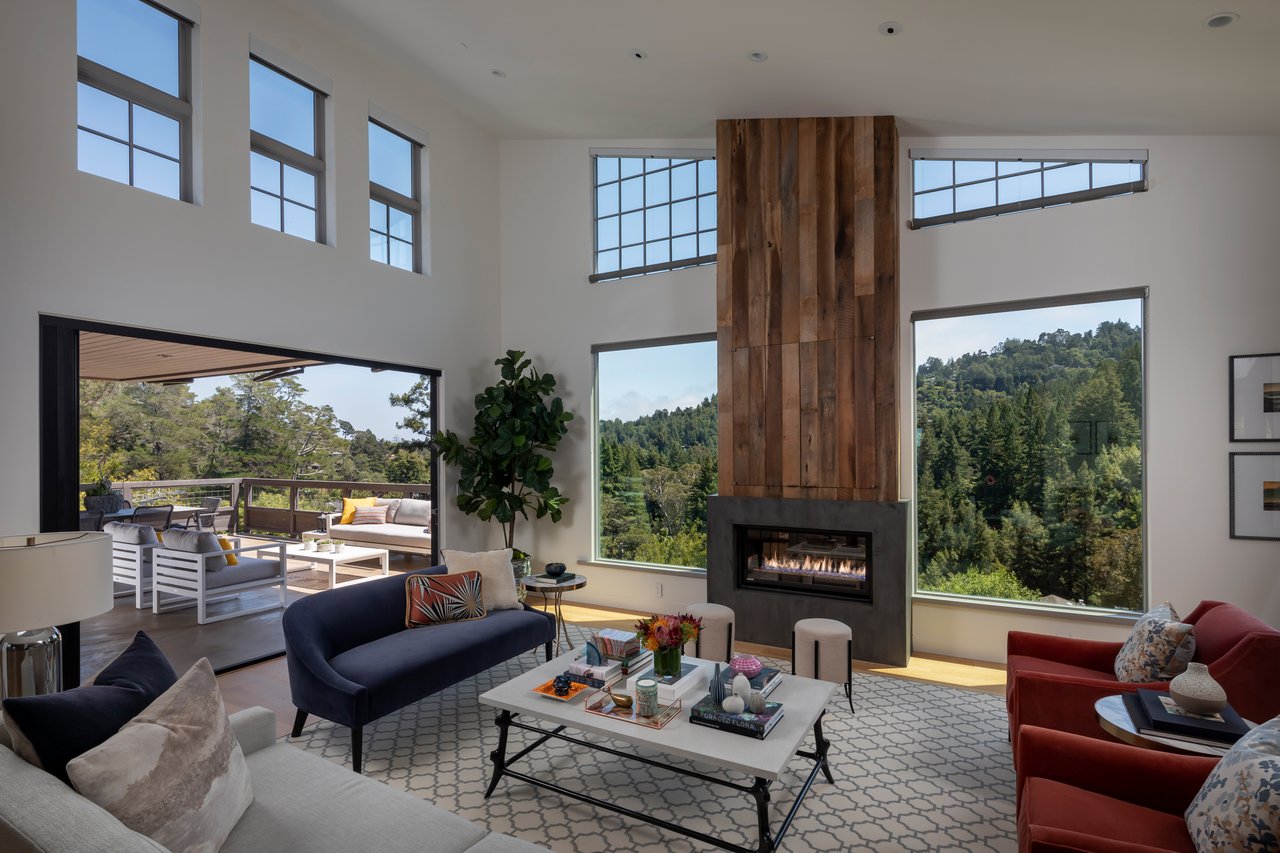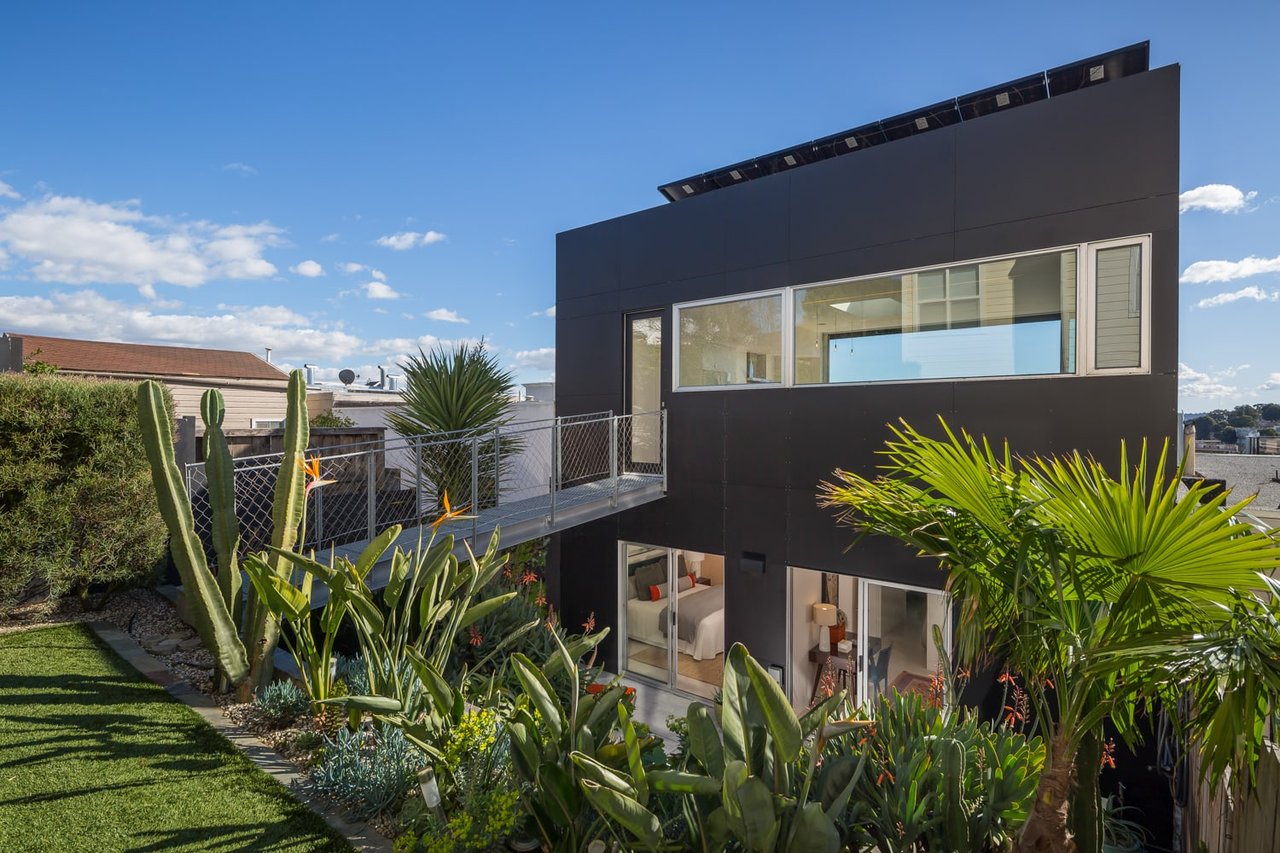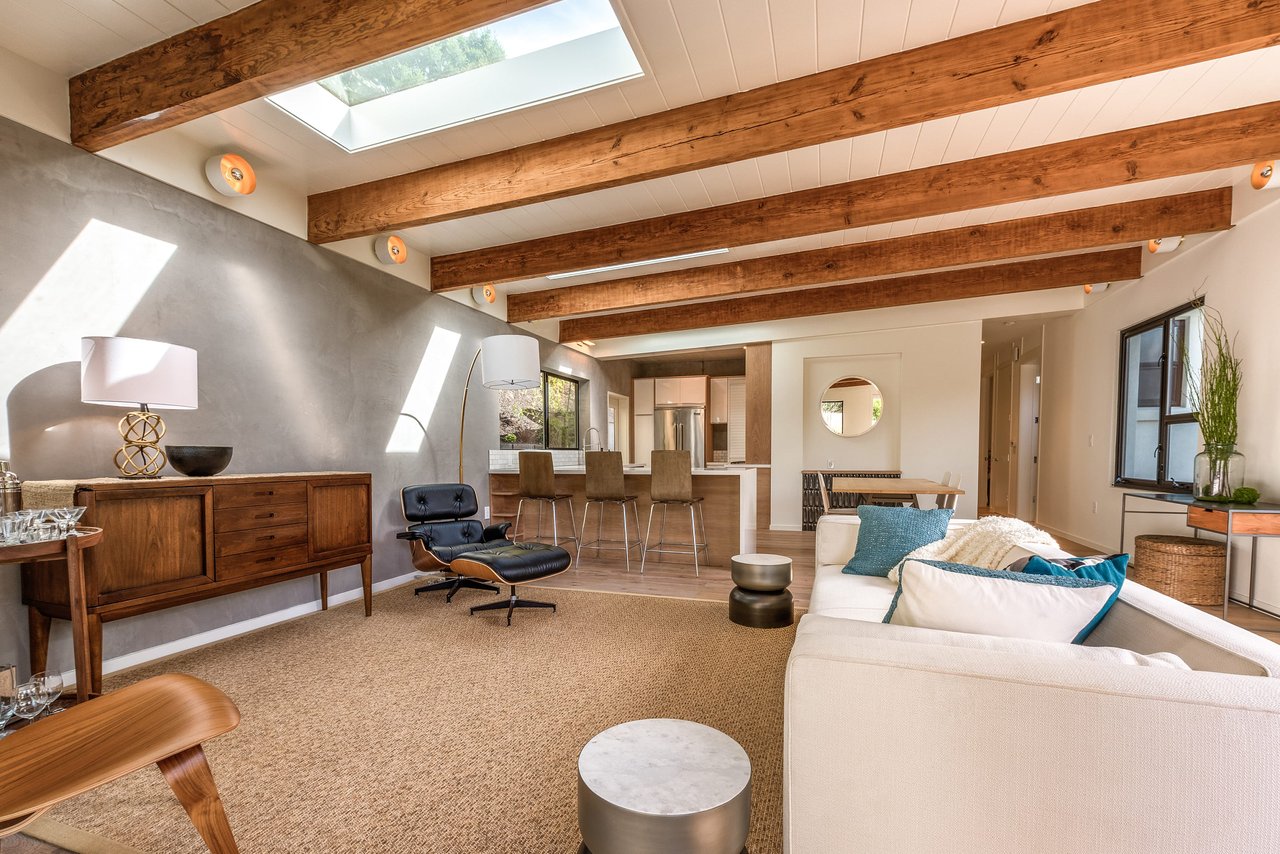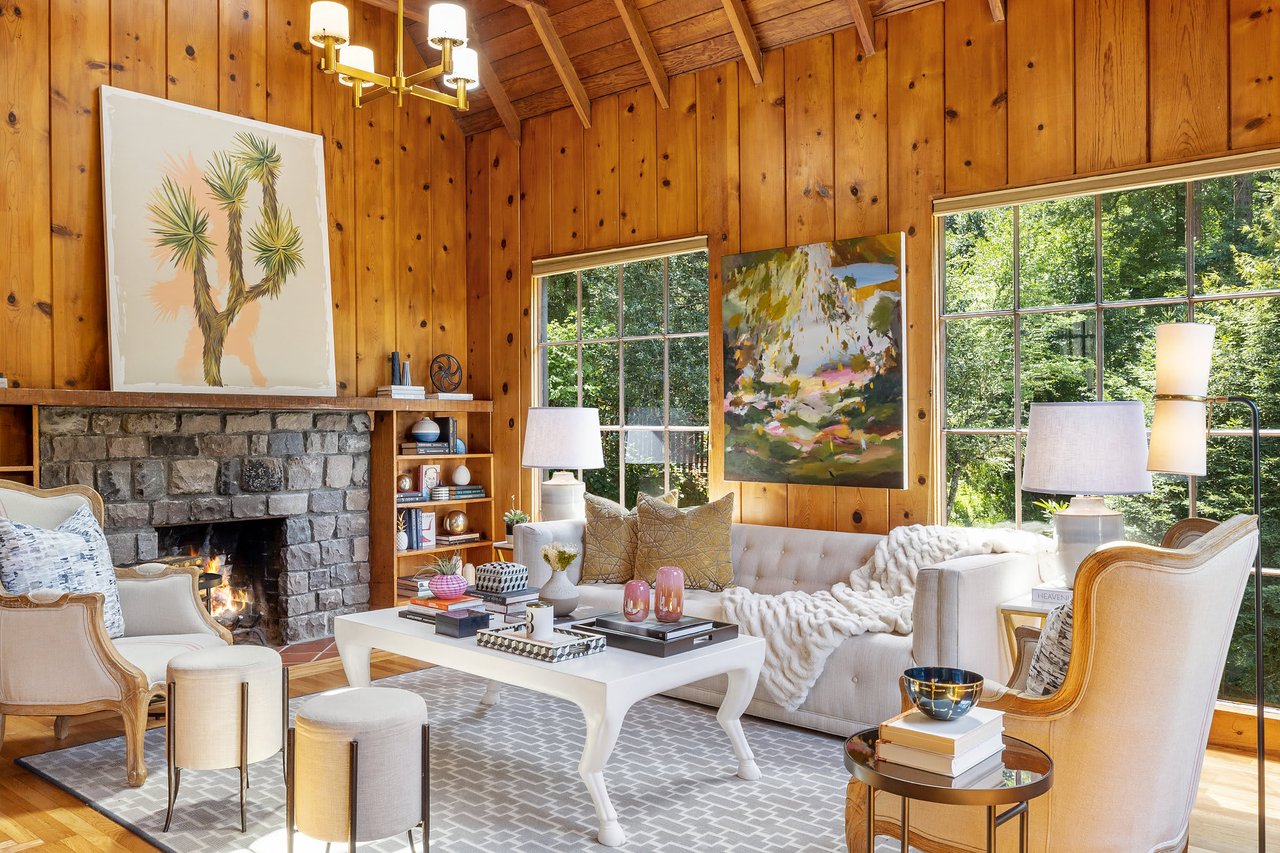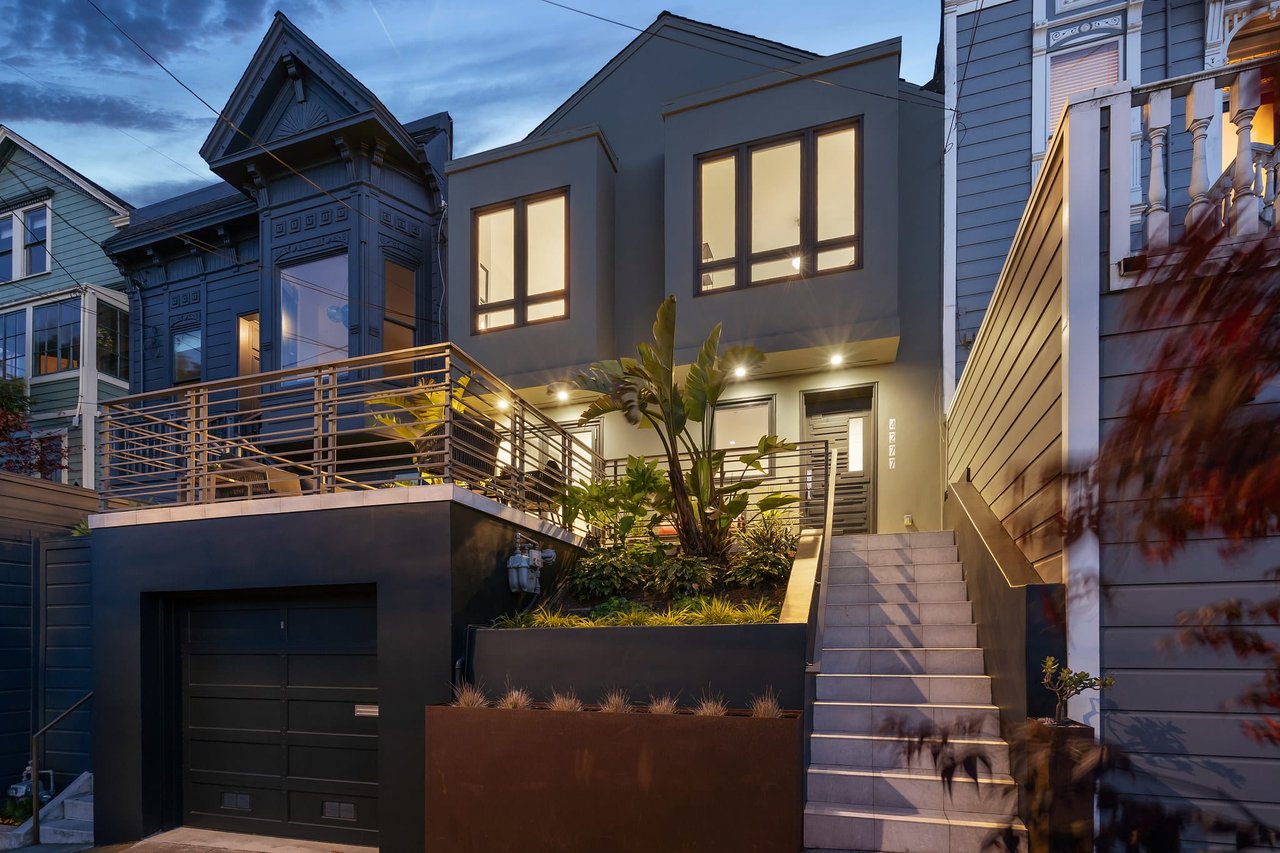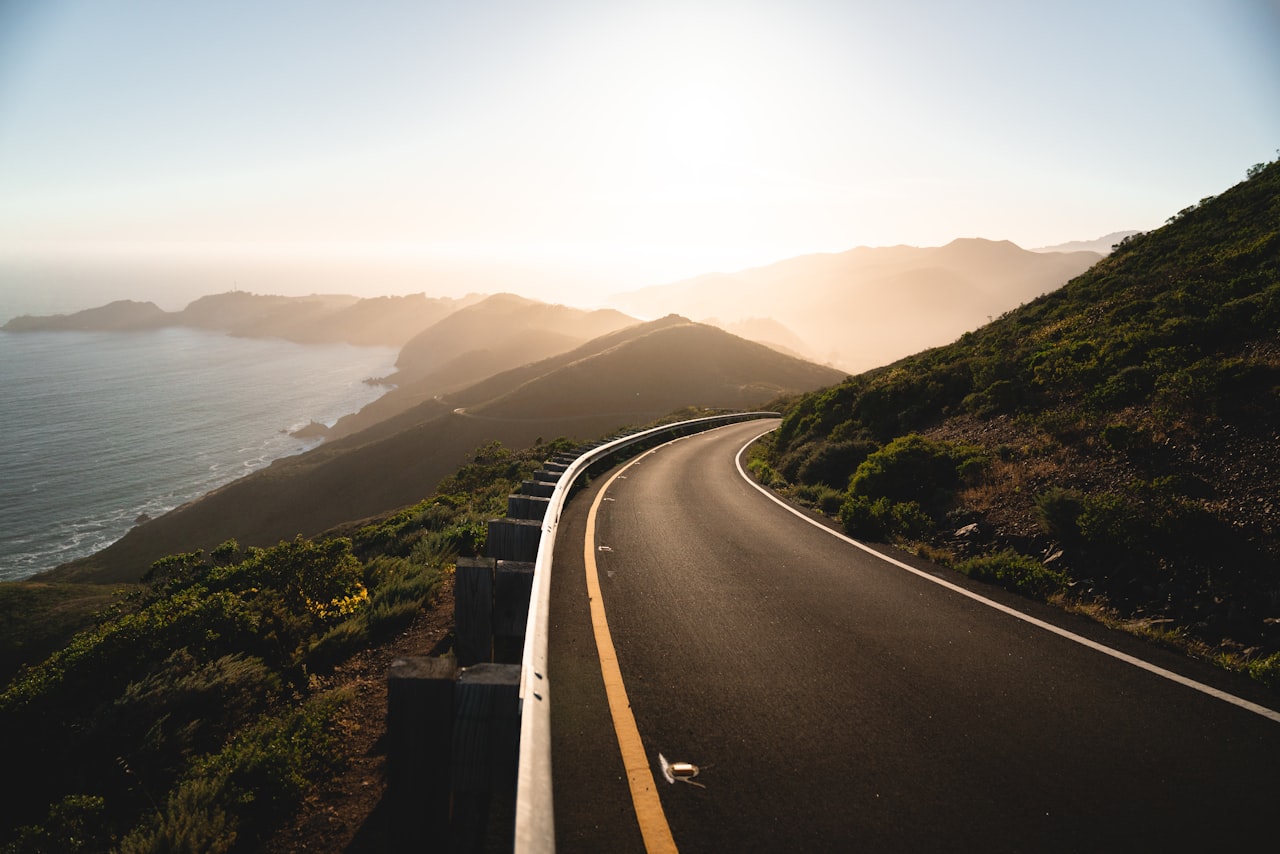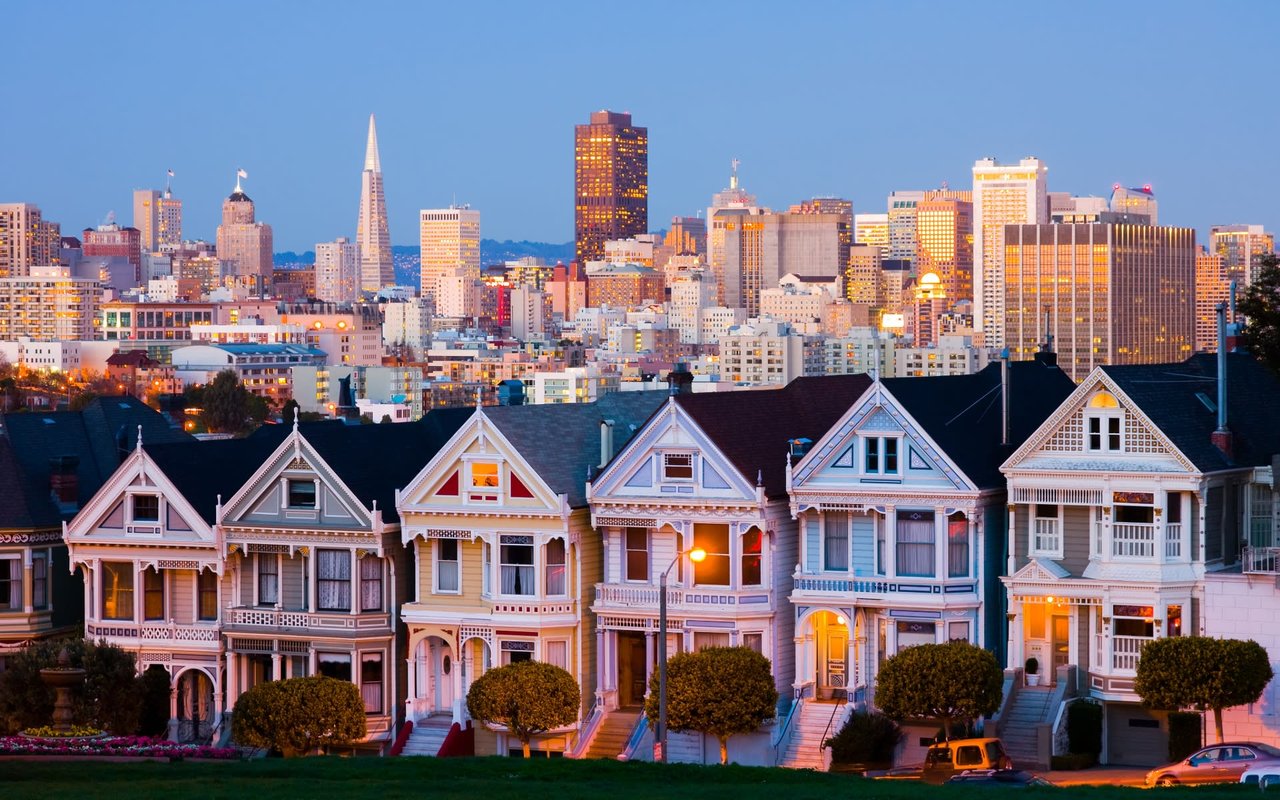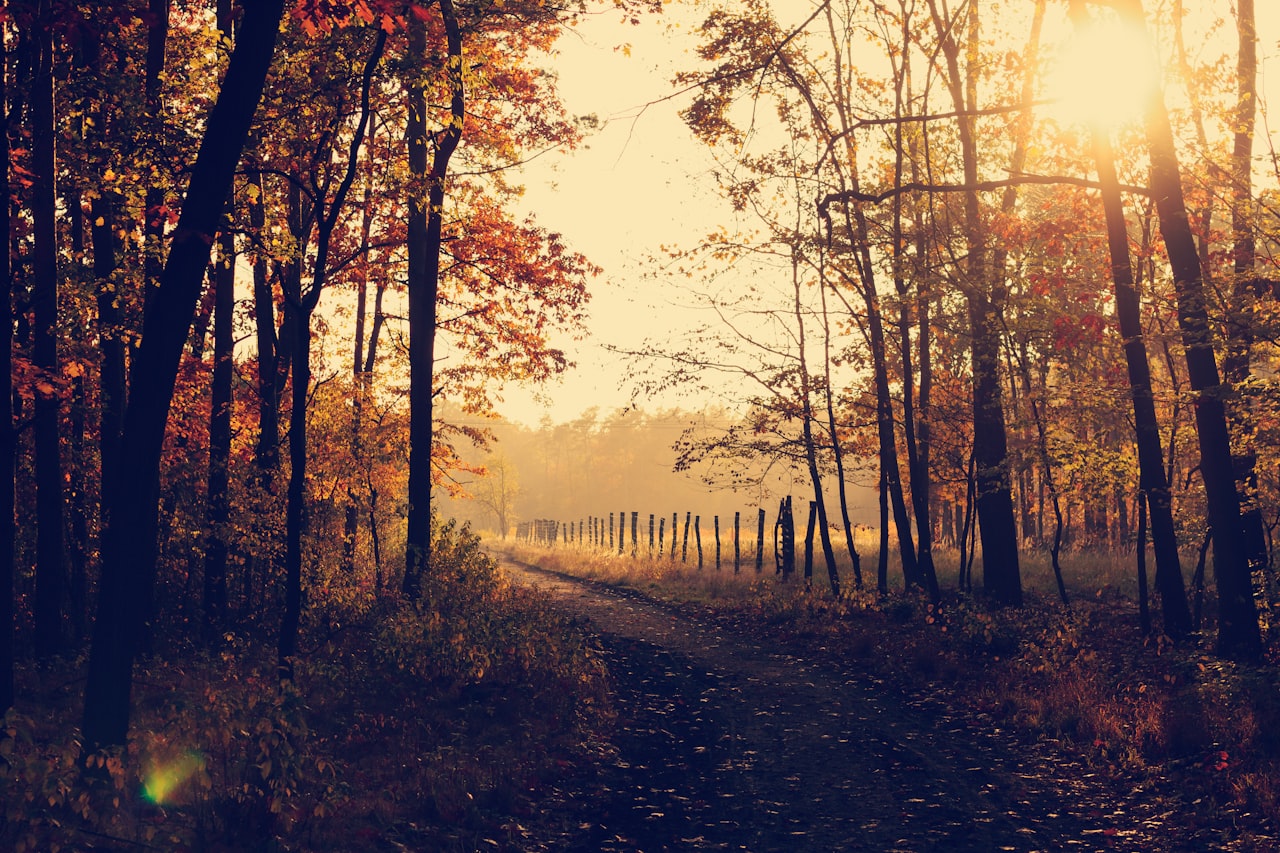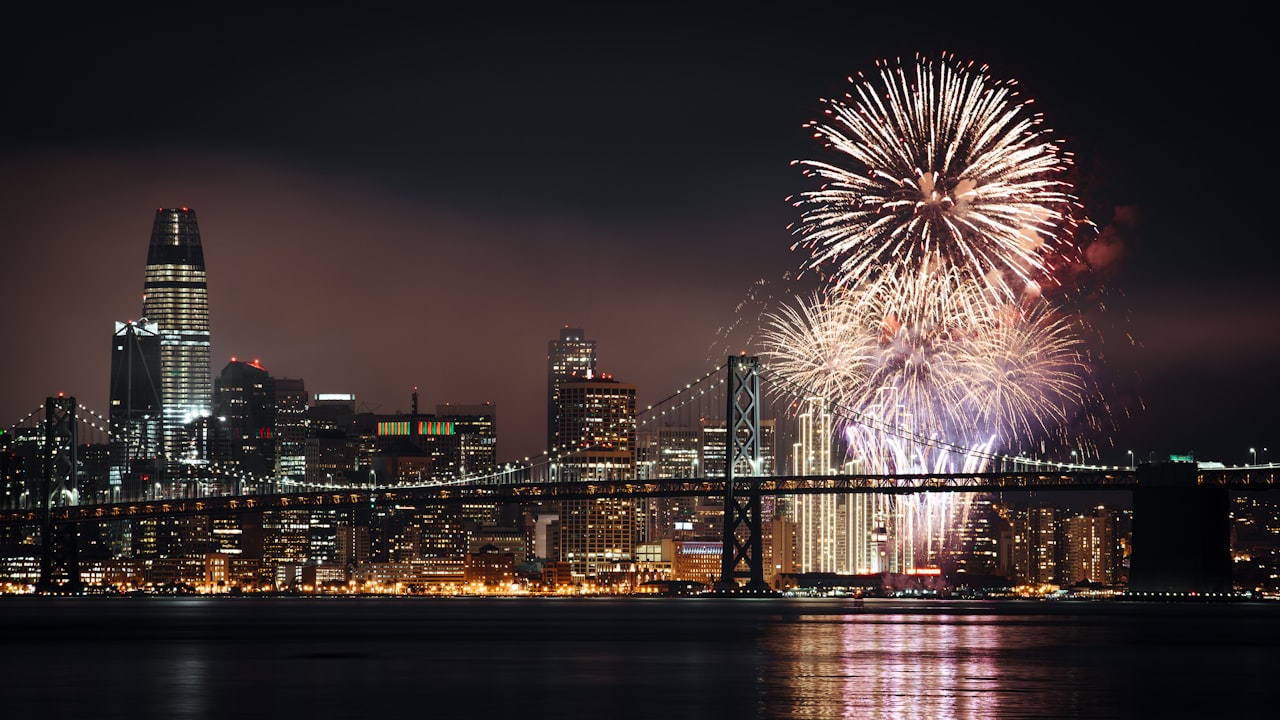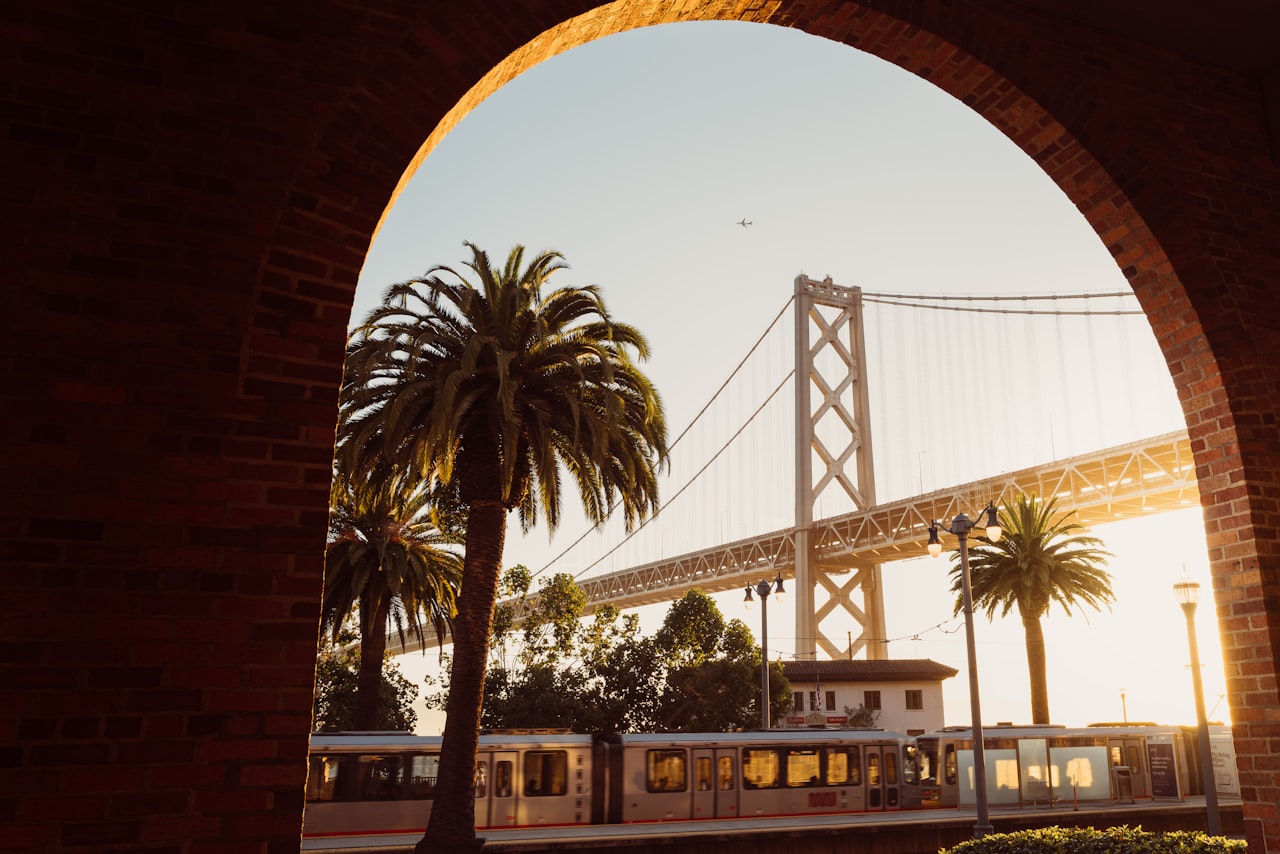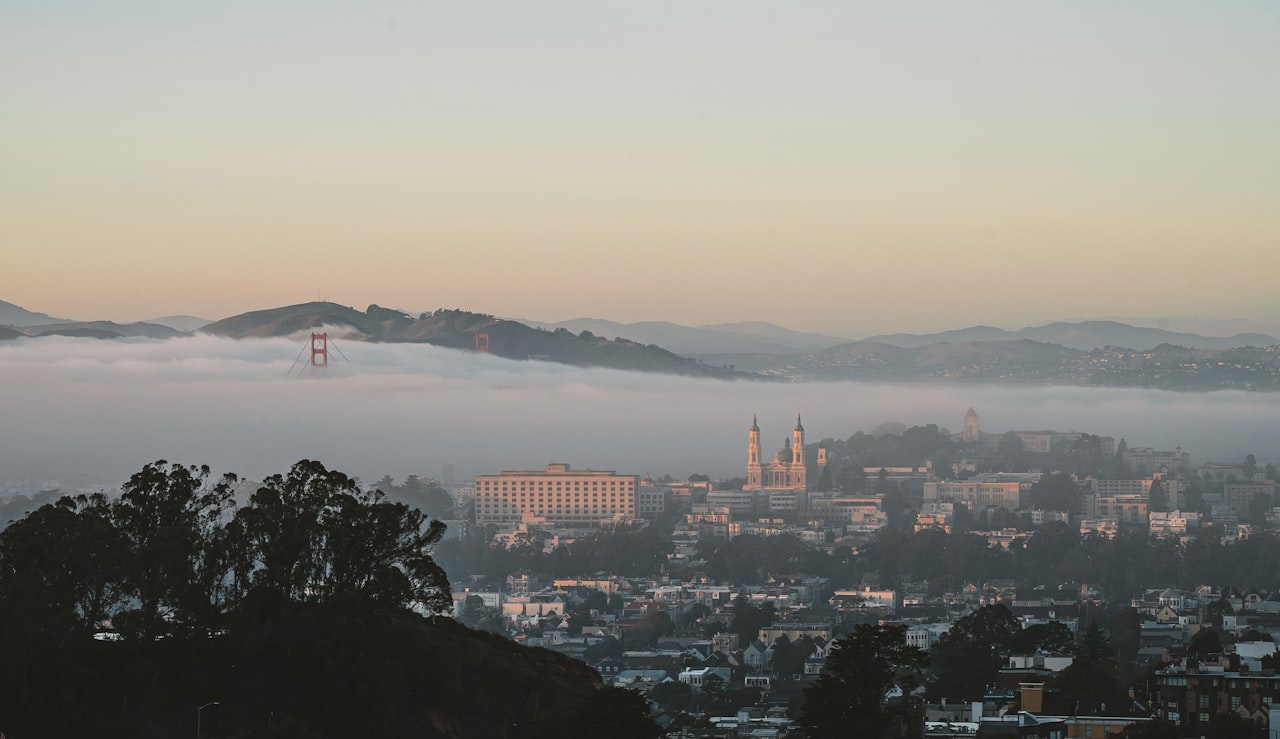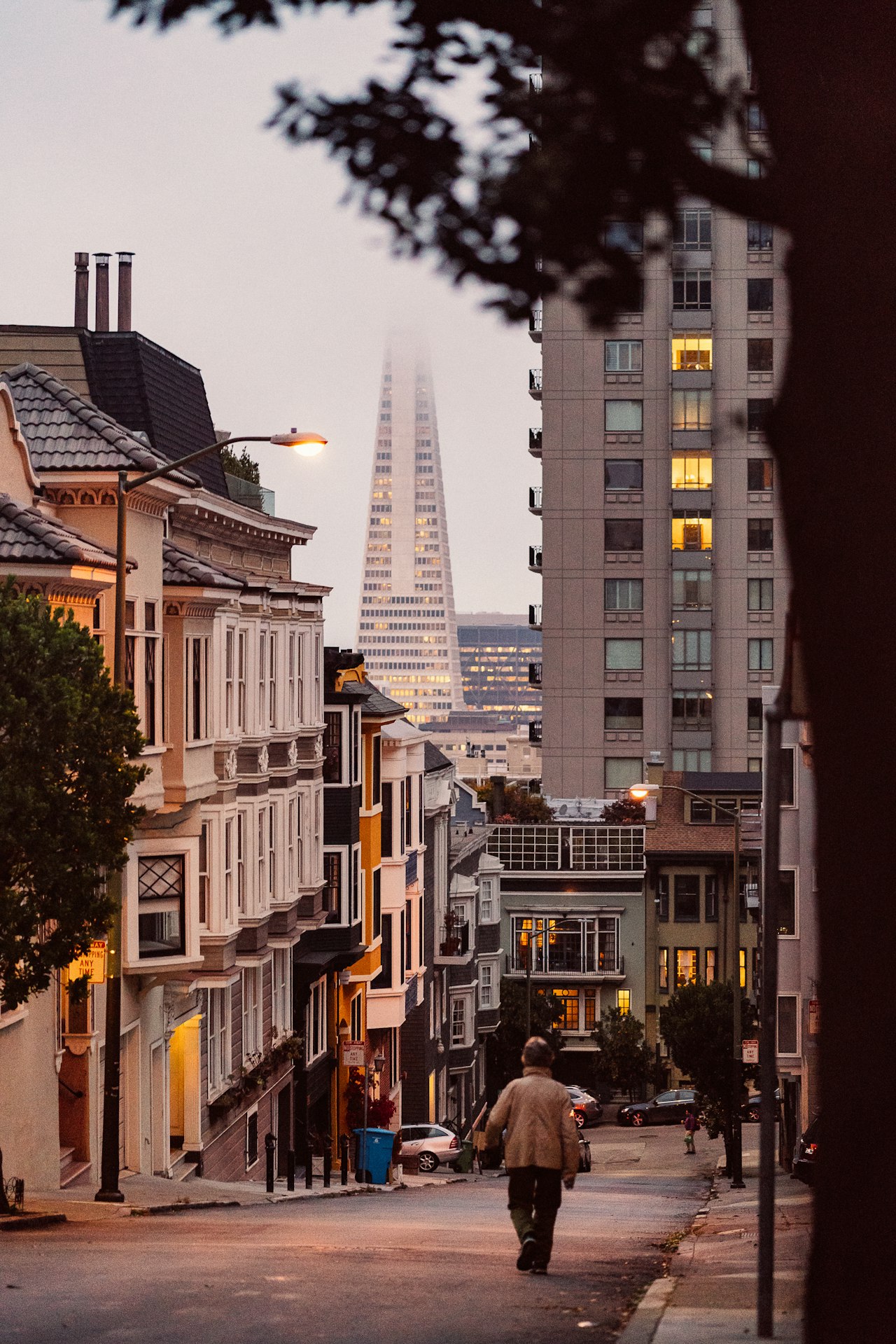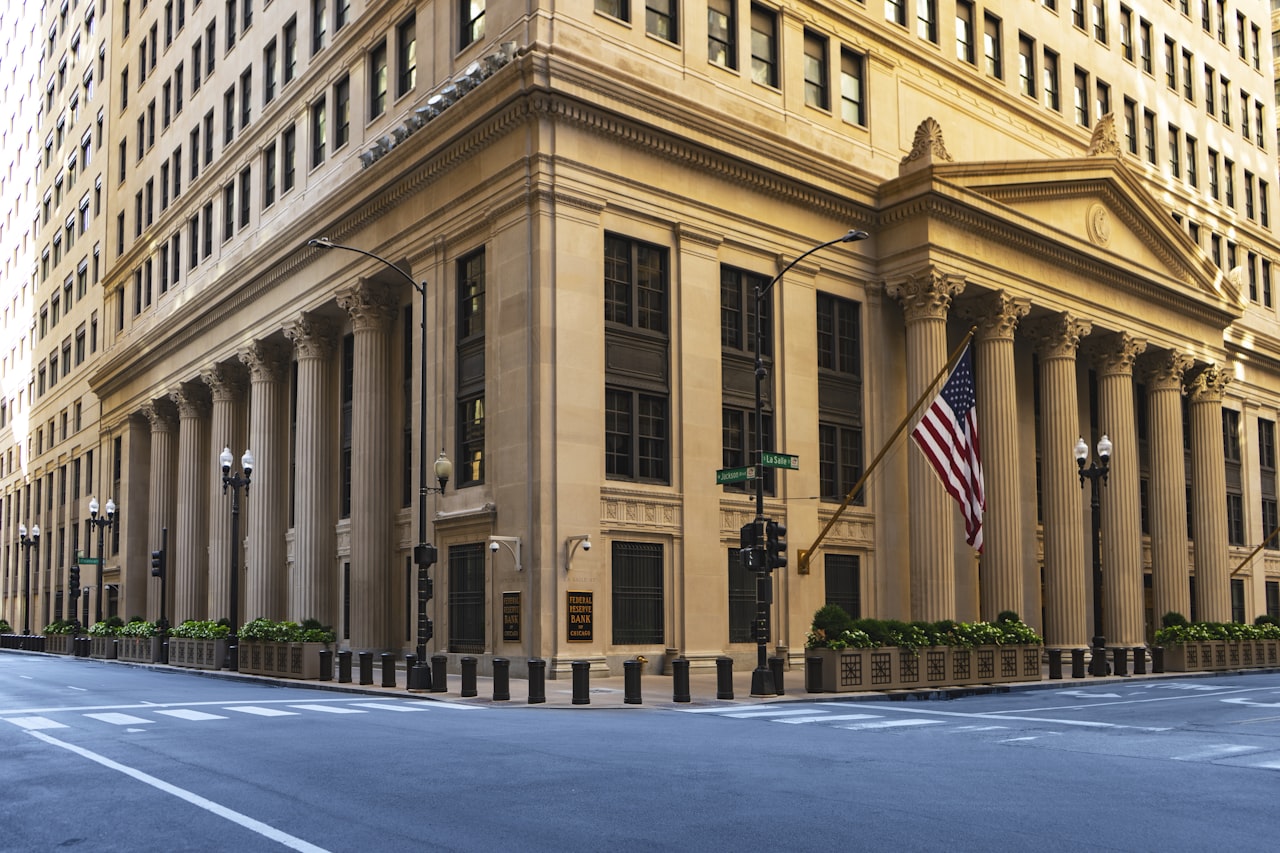From painted Victorians to all-brick warehouses, San Francisco’s vibrant history has lent itself to a large variety of architectural influences. Here are the eight most popular architectural styles you’ll see today in San Francisco
Victorian
Despite its deeply English roots, Victorian architecture is notably featured throughout San Francisco. Contrary to the brick incarnations of this style often seen in England, it became widely popular in the area due to the abundance of lumber available, so typical Victorian houses in San Francisco have wooden exteriors. There are three primary styles of Victorian architecture on display in our beloved streets, each with their own particular flair.
1. Italianate Victorian
Italianate architecture became wildly popular in England during the late nineteenth century, and it’s no surprise that some of that enthusiasm seeped into America. In San Francisco, this style of home architecture is characterized by flat roofs, front facades that are both tall and flat, and bay windows. Although freestanding Italianate-style homes were built during the late nineteenth century, it was more typical to see rows of Italianate houses lining San Francisco’s streets.
2. Eastlake Victorian
Named after its creator Charles Eastlake, the Eastlake Movement combined aspects of Stick architecture and Victorian design to create something new. Stick architecture got its name from the stickwork on the exterior that resembles half-timbered houses, and Eastlake borrowed from this style to spawn the ornate woodwork on the Eastlake Victorian houses’ exteriors. These homes are highly detailed, and their typically square-shaped bay windows help them stand out from the crowd. Eastlake Victorian architecture initiated the first wave of “gingerbread” homes that would become increasingly popularized as the nineteenth century drew to a close.
3. Queen Anne Victorian
These iconic homes are seen scattered throughout San Francisco real estate. You’ll recognize this style by their large front gables, overhanging eaves, both oriel and bay windows, and painted balustrades. If you’ve ever glanced at a postcard of San Francisco, you’ve likely glimpsed two iconic SF landmarks: the Golden Gate Bridge and the Painted Ladies. The Painted Ladies is a colloquial term for any repainted Queen Anne Victorian style home, but most notably a strip of row houses along Hayes Street. In the late 20th century, many Queen Anne homes were repainted with multiple colors to accentuate their brilliant details and their layered wood exteriors. To wander through the halls of a historic Queen Anne-style home, swing by the Haas-Lilienthal House, which was erected in 1886. This turreted Queen Anne house was designed by Peter R. Schmidt, and it survived both the devastating 1906 earthquake that coursed through San Francisco as well as a consequential fire. It’s the only house built during this time period to remain as a full-time museum, so it is one of the best ways to get a feel for Queen Anne Victorian homes.
Beaux-Arts
The San Francisco War Memorial Opera House is the last known Beaux-Arts style construction in the United States, marking the end of a French design style spanning approximately seventy years. Beaux-Arts style is highly sculptural, leaning heavily on materials like iron and glass, and implements many Classical details such as an emphasis on symmetry, bas-relief, and polychromy. Across the nation, Beaux-Arts architecture was incredibly popular, and buildings such as New York City’s Metropolitan Museum of Modern Art and Grand Central Terminal, Union Station in Washington D.C., and the campus of the University of California Berkeley feature Beaux-Arts characteristics.
First Bay Tradition
First Bay Tradition architecture is a San Francisco Bay classic. Born as a response to Beaux-Arts architecture, this style transforms the east coast’s Shingle style architecture to add a little west coast touch. Shucking off the classicism of Beaux-Arts, First Bay Traditions emphasize closeness to nature, and homes built with this design often incorporated a plethora of natural elements, such as redwood shingles, and aimed to coordinate the house with its environment. Most houses built with this design feature very austere exteriors adorned with few decorations save their namesake shingles. Simplicity was the key to these homes. This stark contrast to the ornate embellishments of other architectural styles makes First Bay Tradition houses compellingly differentiated. You’ll recognize houses built with this design to have hipped roofs and exceeding craftsmanship. Leading First Bay Tradition architects included Willis Polk, A.C. Schweinfurth, and Ernest Coxhead. Polk’s residence on Russian Hill, which was established in 1892, is an example of First Bay Tradition architecture that continues standing today.
Jacobean Revival
This revival of popular Tudor style architecture lends itself well to storybook dwellings, imbued with charm and character. By drawing references from an architectural style that dates back to the 1400s, houses with Jacobean Revival influence are highly distinguishable. Their notable high-pitched roofs, exposed timbering, and pointed windows closely align with the references in East Anglia, such as from Norfolk and Cambridge. This style was primarily popular for single-family households rather than commercial constructions and emerged as a facet of the British Arts and Craft Movement. Notably, in San Francisco, John Cotter Pelton designed a streak of row houses along California Street that resemble the Jacobean Revival design.
American Craftsman
Craftsman-style homes are iconic pieces of California architecture, and this style excelled in the Bay Area during the mid-1920s. Sometimes referred to as “California bungalow” style, this form of architecture gained popularity for private residences in the early 20th century. Inspired by the Arts and Craft Movement in Europe, American Craftsman architecture incorporates wide front porches with square columns supporting the porch roof, low-pitched roofs, overhanging eaves, and exposed rafters. Often, Craftsman homes feature shingled roofs and horizontal siding or stucco exteriors. The focal point of these homes is often the fireplace, making them feel extraordinarily cozy. Because of San Francisco’s narrow plots of land and high demand, traditional American Craftsman-style homes had to be adapted to accommodate the Bay Area, but you’ll recognize their exposed woodwork and overhanging roofs. In San Francisco, peruse Craftsman-style homes in Mission Terrace and Westwood Park, on the southern edge of town.
Rousseau
Oliver Rousseau was a San Francisco-born architect and home builder who developed an individualized style that remains visible in the Bay Area today. This Depression-era architect faced many challenges, but his Romantic designs were a personal effort to add color and life back to the streets. The Sunset District, still today, is speckled with these vividly colored homes, which look like they could have been transposed directly from a fairytale. Each house looks a little bit different, which endows the neighborhood with whimsical charm. Although this style was copied by many different architects such as Henry Doelger and Donell Jaekle, who also built homes in the Sunset District, Rousseau’s creations were widely regarded as superior, which is why the style carries his legacy in its name.
Mediterranean Revival
Until World War II, this style of home was incredibly popular across the west coast, and they are instantly recognizable by their cream-colored stucco walls and red clay-tiled roofs. Due to San Francisco’s warm-summer Mediterranean climate, this style of architecture fits the area well, and developers were keen to emphasize the similarities between California and the balmy Mediterranean. This style draws influence from 16th-century Italian palazzos with symmetrical facades, wrought-iron balconies, and arches secured with keystones. While widely used for private residencies, the Presidio Building here in San Francisco is an excellent example of this style also being used for commercial real estate.
Marina
The Marina District spawned this style of architecture during the 1920s, and it quickly became prominent throughout the city. While this style incorporates elements from other contemporary architectural trends, such as Art Deco and Mission Revival, they are still uniquely their own. Because this style was the byproduct of redeveloping land that had been used during the Panama Pacific International Exposition of 1915, these homes began as clean slates. This style is typical of both single-family dwellings as well as apartments, and are usually characterized by a front-facing garage, an oversized bay window that overlooks the street, and stucco exterior walls with flat, tiled roofs. These homes often feature expansive backyards, which is excellent for outdoor entertaining.
If you’re interested in finding out more about how you can call San Francisco, CA real estate home, reach out to us today. We’d love to help you learn more about San Francisco real estate listings.
FROM OUR BLOG

Caution Signs: Tariffs shake up Bay Area’s spring housing market
The Binnings Team
The Real Deal interviews Arrian Binnings
Read More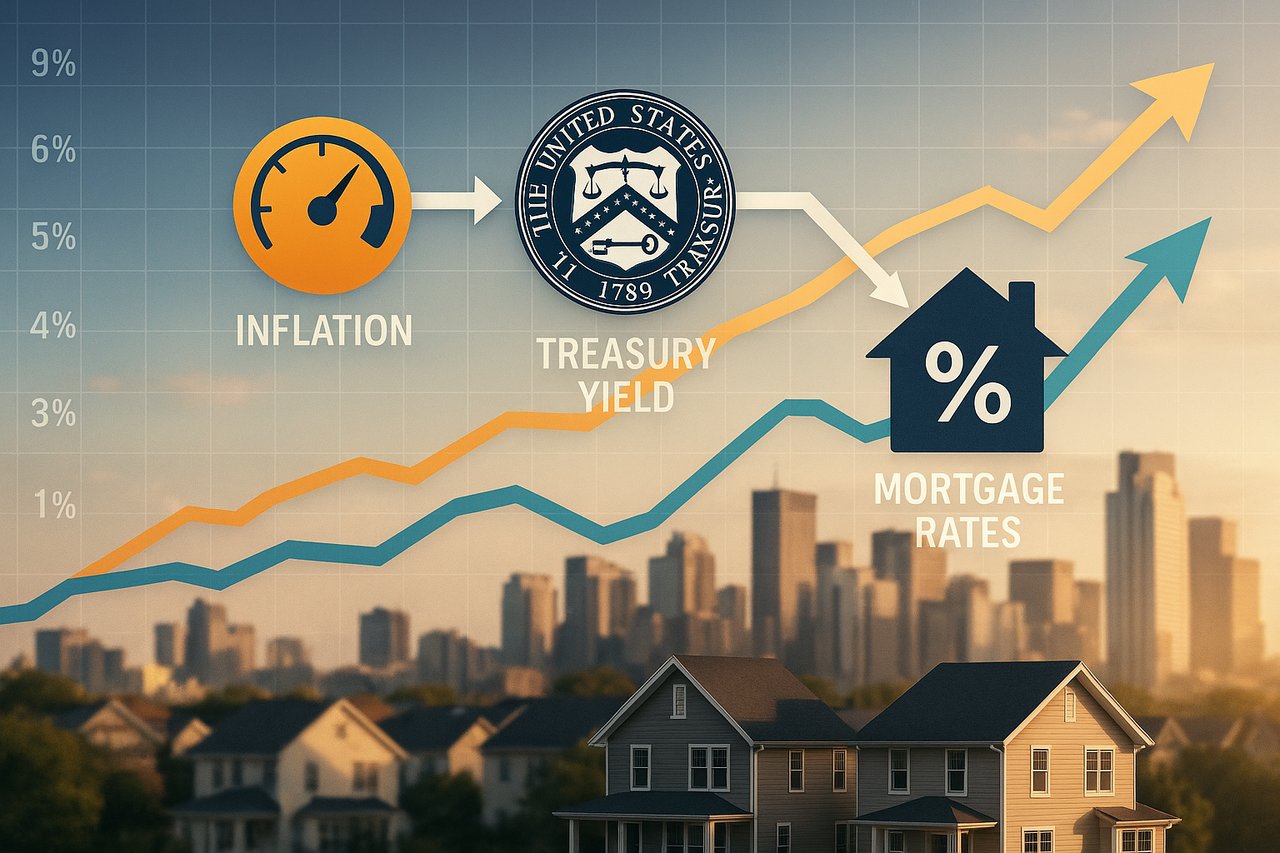
Inflation, the 10-Year Treasury, and Mortgage Rates
Arrian Binnings + Deep Research
Understanding the relationship
Read More
AI Isn’t Just Rewriting Code, It’s Redrawing the Map
Arrian Binnings + Deep Research
AI Boom & Bust Towns Profiled
Read More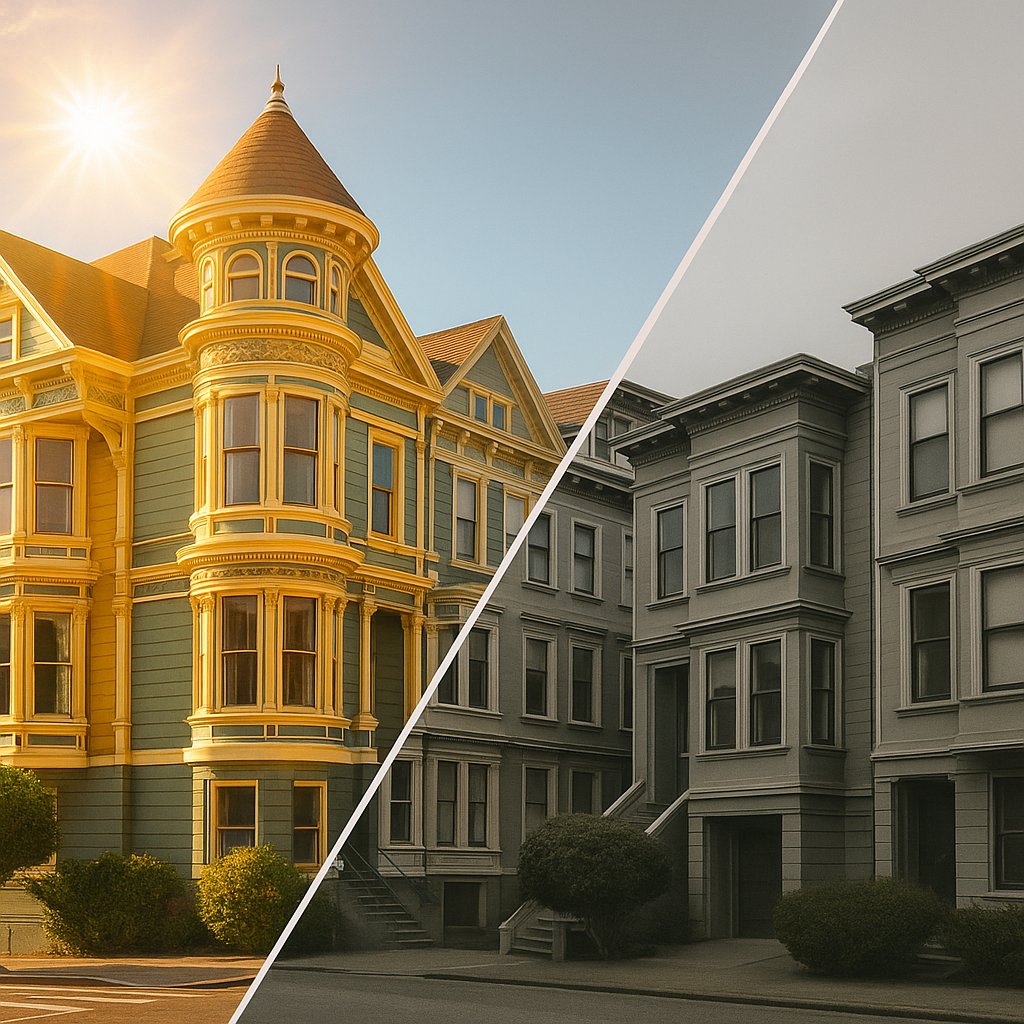
Bay Area real estate market shows mixed signals as spring selling season unfolds
The Binnings Team
Arrian is featured in the SF Business Times
Read More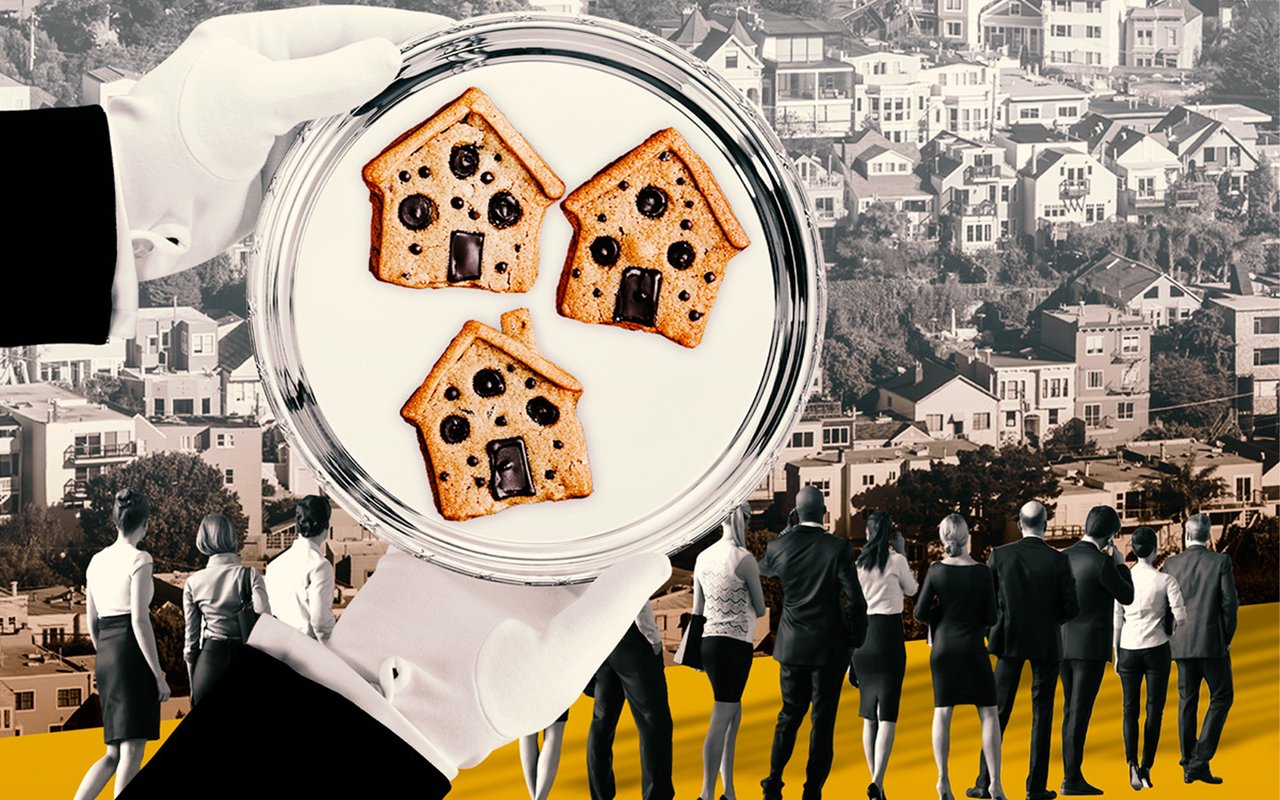
Filling the First Republic Void: Where Bay Area Tech Buyers Turn Next
The Binnings Team
The Real Deal interviews Arrian Binnings
Read More
How Much Does It Cost to Maintain a Home in California?
The Binnings Team
Almost all new homeowners have calculated their monthly mortgage payments, but few...
Read More
Survey: Most Homebuyers Want an All-Digital Mortgage Process
The Binnings Team
In a survey of 3,000 recent home buyers, the company found that most borrowers wan...
Read More
Real Estate Roundup: Most New California Homes Have Smart Features
The Binnings Team
Anyone buying a newly constructed home in the Golden State is likely to get the la...
Read More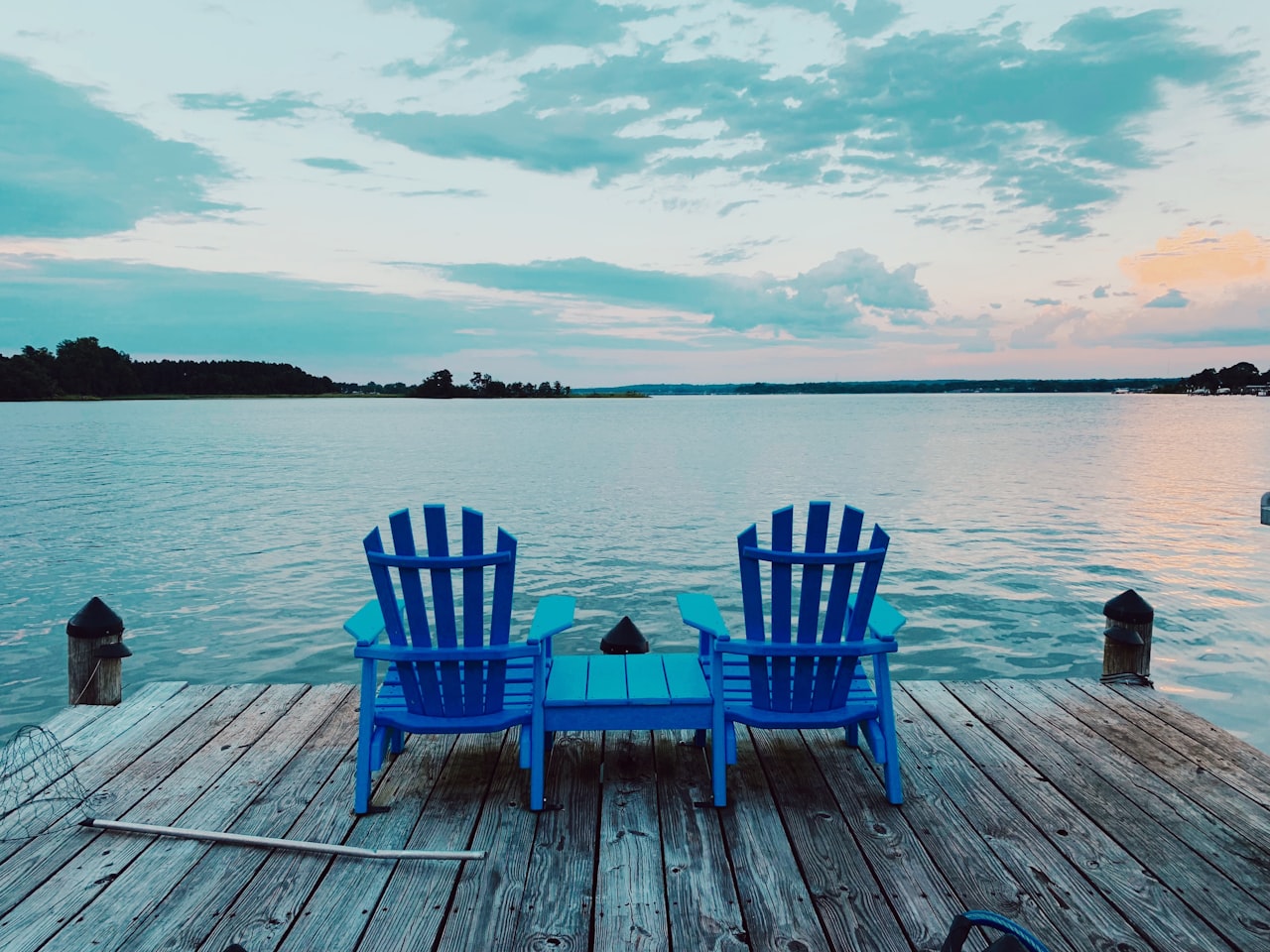
What Do Americans Want in Their Ideal Home?
The Binnings Team
While a home’s perfect location, size, and amenities are unique to each buyer’s pe...
Read More
Another Survey Highlights the Importance of Schools in the Home Buying Process
The Binnings Team
Survey results released earlier this summer showed that nearly 80 percent of recen...
Read More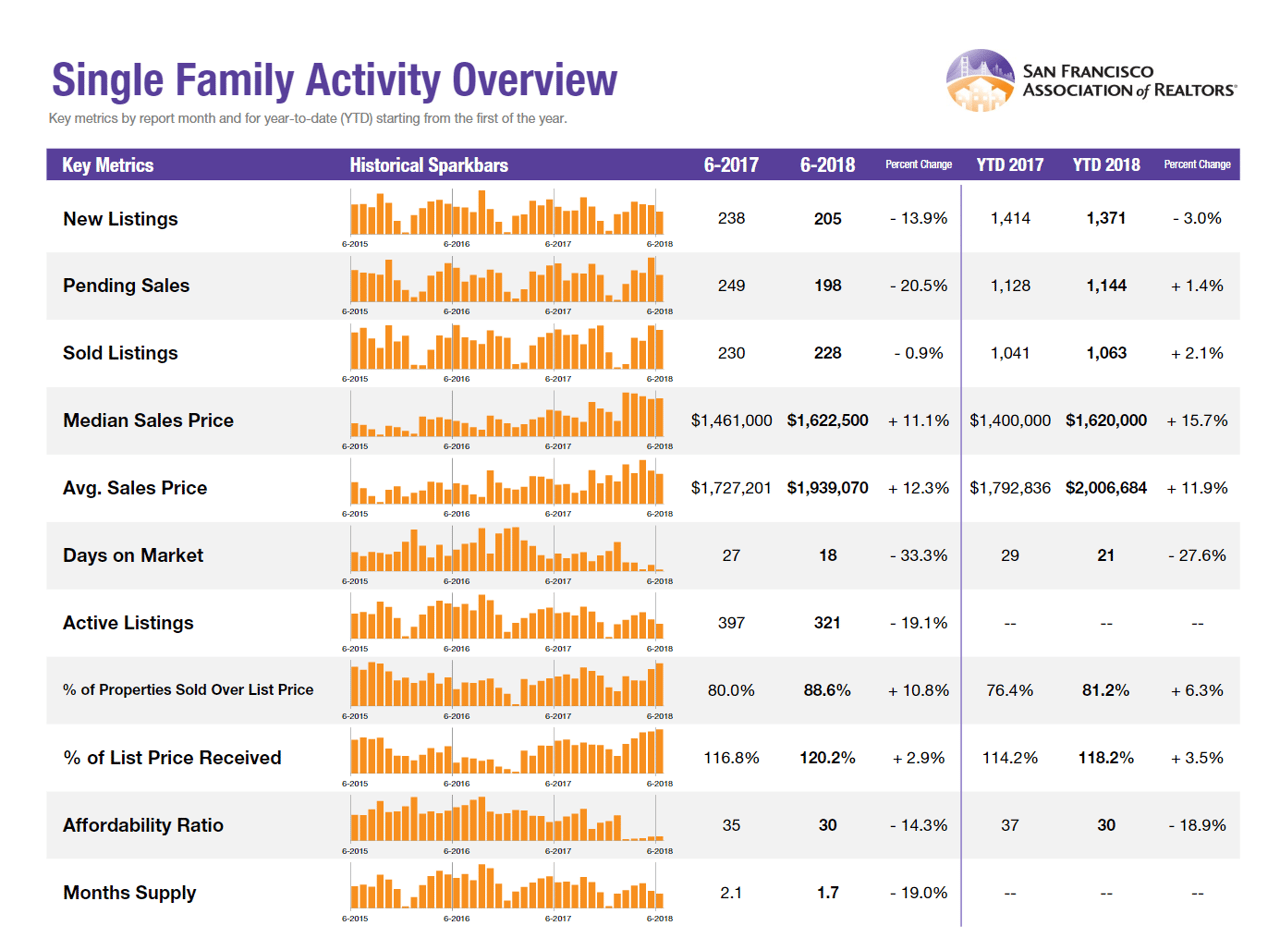
Market Focus Report June 2018
The Binnings Team
Housing markets across the nation are most assuredly active this summer, and buyer...
Read More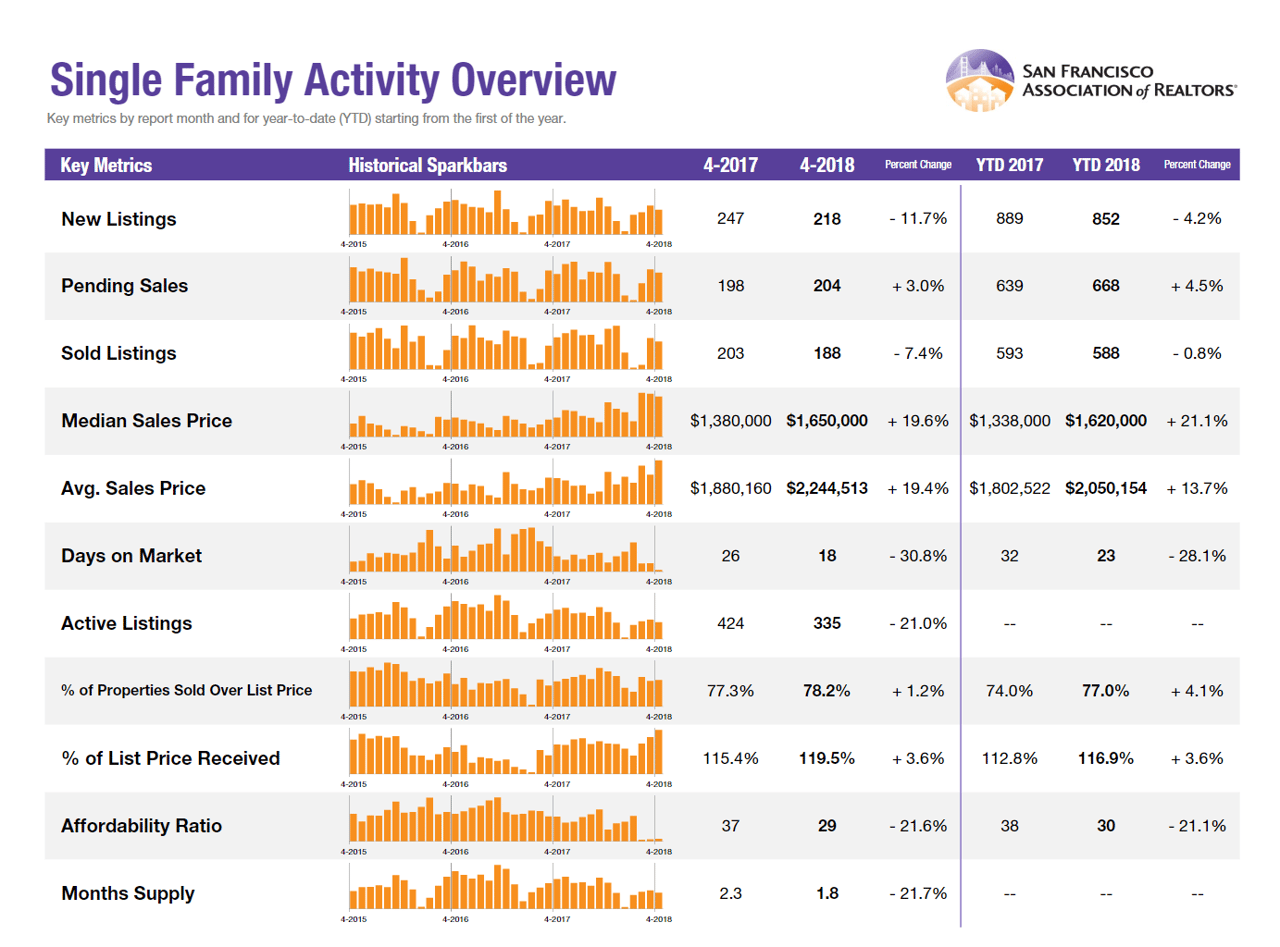
Market Focus Report April 2018
The Binnings Team
Many sellers and builders are in a good position for financial gains, as the econo...
Read More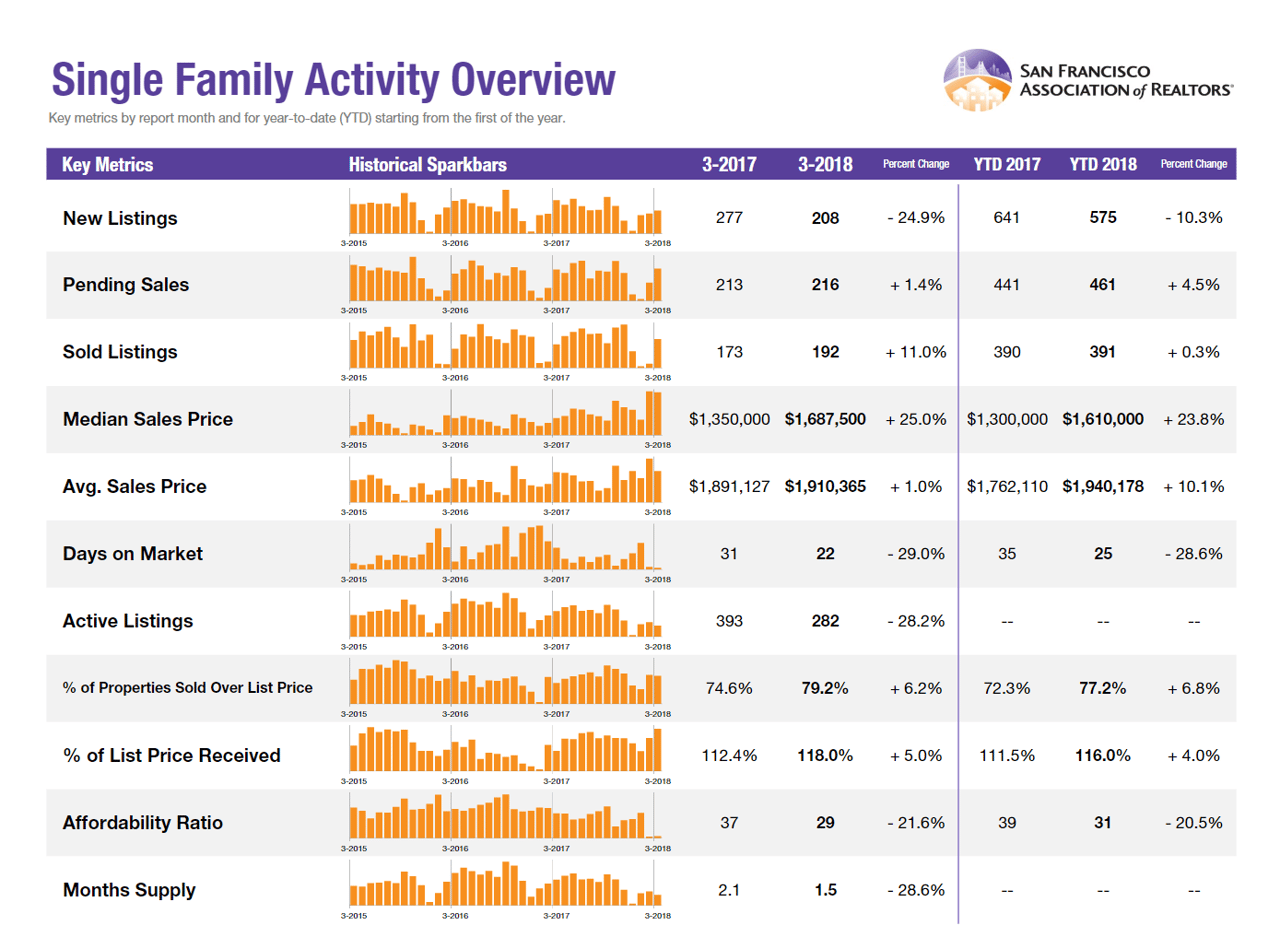
Market Focus Report March 2018
The Binnings Team
New residential real estate activity has been relatively slow in the first quarter...
Read More
Market Focus Report February 2018
The Binnings Team
Markets are poised for increased supply, so there is hope that more sellers will ...
Read More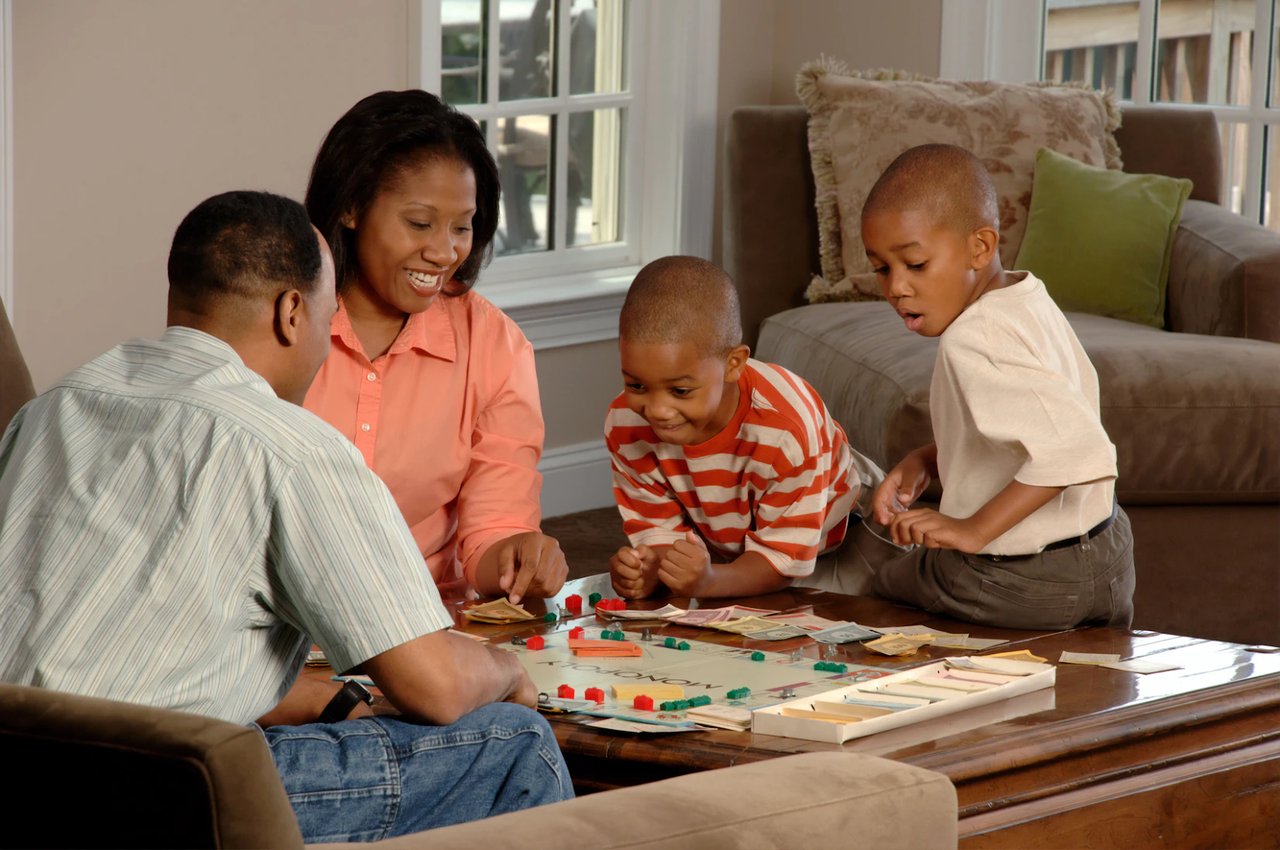
14 Kid-Friendly Activities When You're Stuck Indoors
The Binnings Team
This spring, people across the nation have been asked to stay safe at home in resp...
Read More
8 Popular Architectural Styles of San Francisco
The Binnings Team
From painted Victorians to all-brick warehouses, San Francisco’s vibrant history h...
Read More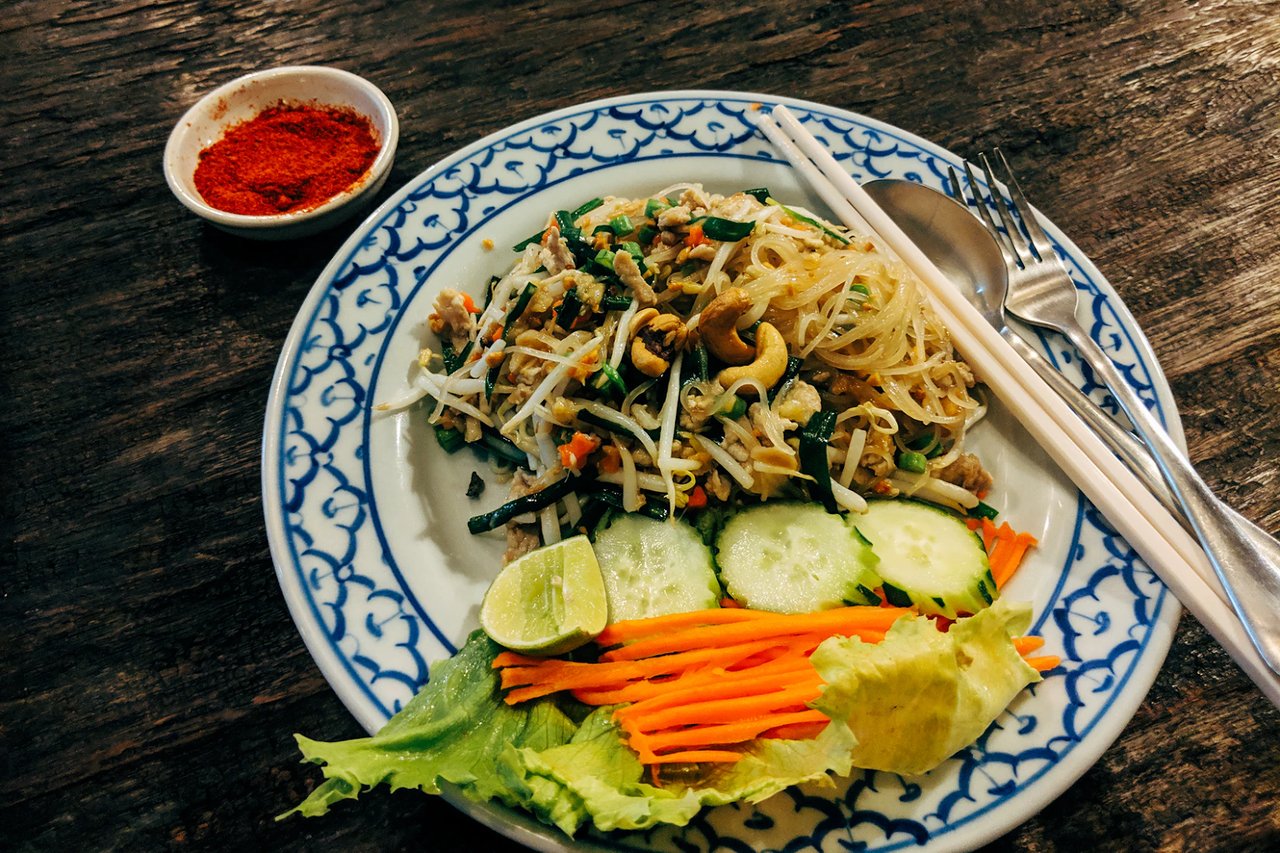
8 Bay Area Restaurants That Deliver
The Binnings Team
From classic Italian cuisine to innovative Thai eats, no matter what you’re cravin...
Read More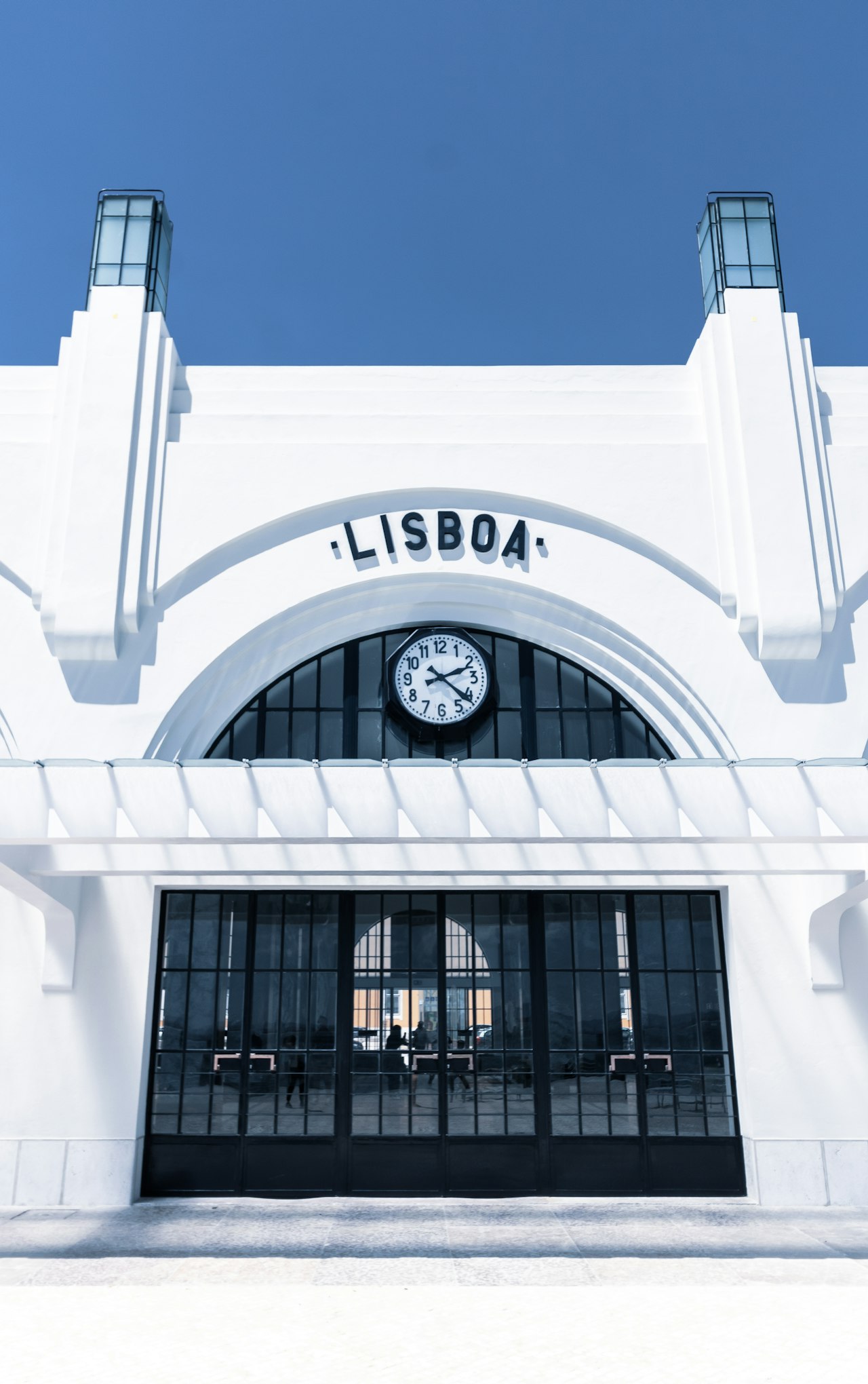
Golden State or Golden Visa
The Binnings Team
Whether you're looking to move or buy a second home outside of the Bay Area, we ha...
Read More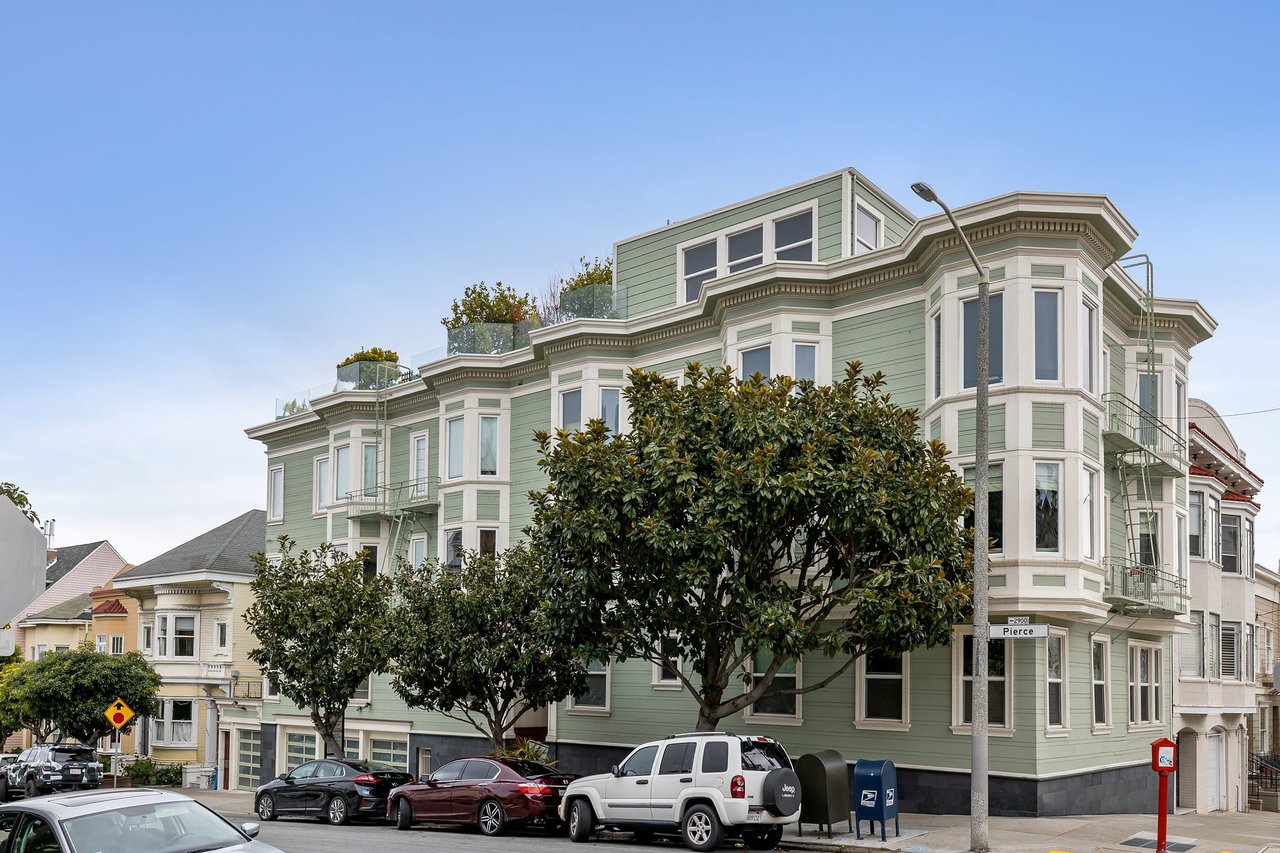
10 Reasons People Love Cow Hollow
The Binnings Team
Learn more about one of San Francisco’s most sought-after neighborhoods.
Read More
Warm Versus Winter Escapes
The Binnings Team
Whether you're looking to move or buy a second home outside of the Bay Area, we ha...
Read More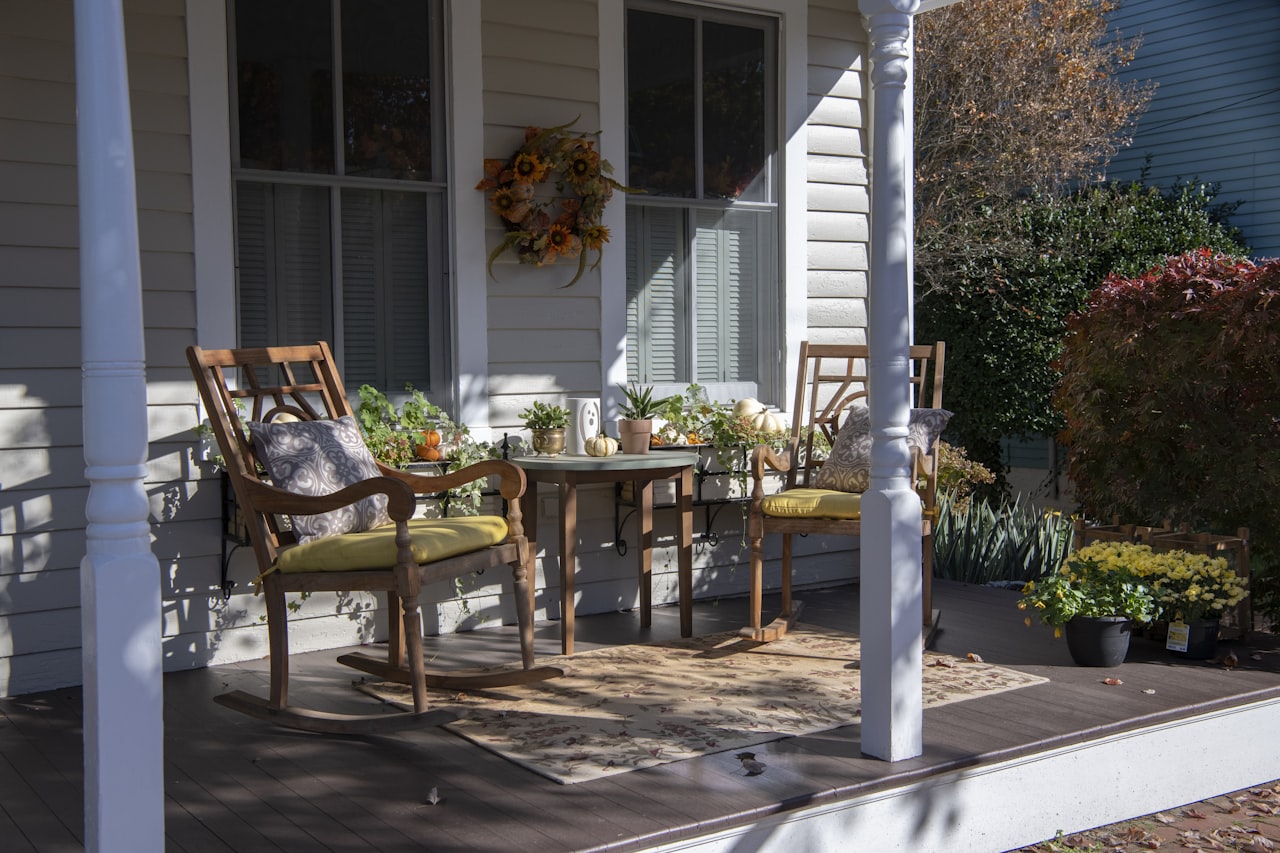
City Life Versus Country Living
The Binnings Team
Whether you're looking to move or buy a second home outside of the Bay Area, we ha...
Read More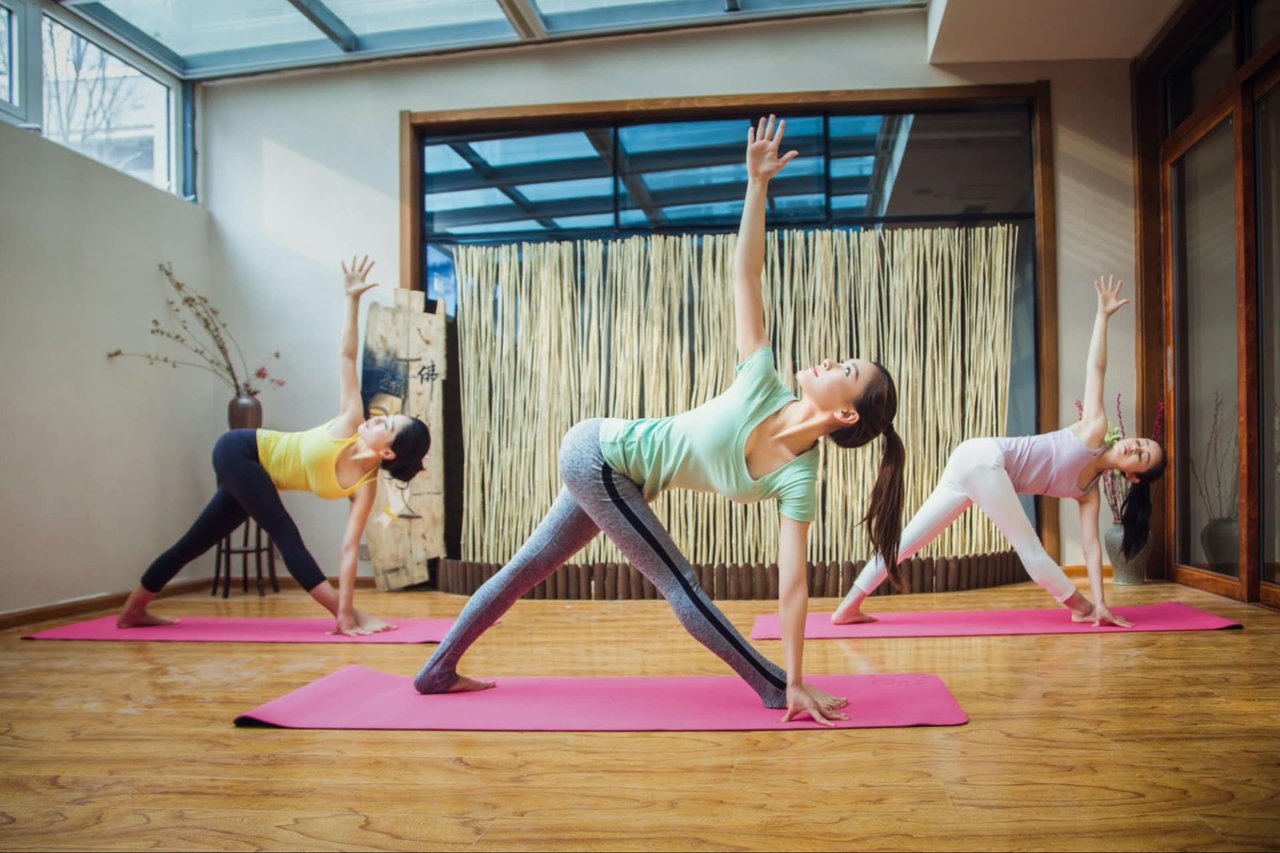
Find Your Zen at These 4 San Francisco Yoga Studios
The Binnings Team
Explore the thriving yoga community of the City by the Bay.
Read More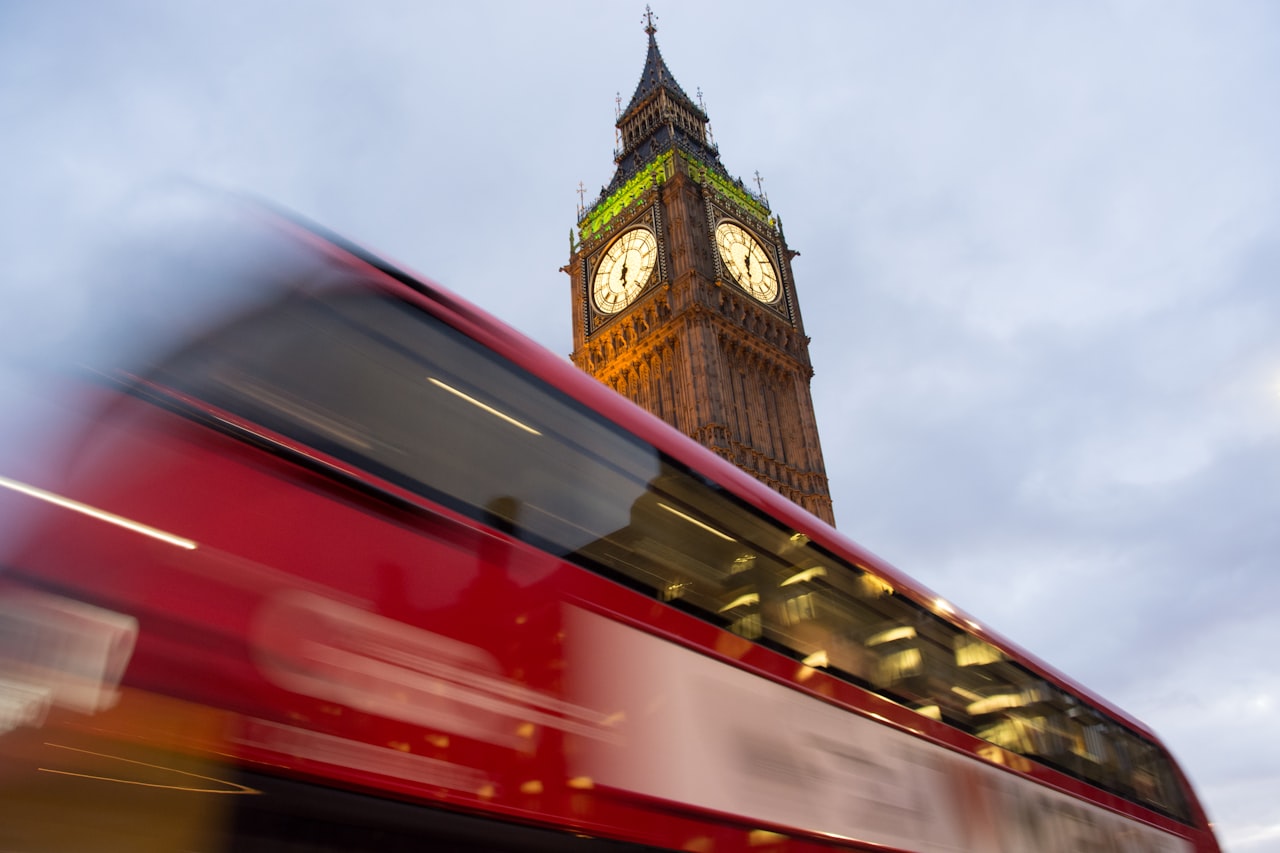
Post-Pandemic Migration of the Wealthy
The Binnings Team
Whether you're looking to move or buy a second home outside of the Bay Area, we ha...
Read More
4 Ways to Increase the Number of Offers on Your Home
The Binnings Team
The best ways to get more offers on your home
Read More
Pacific Heights Trends - YTD 2023
Commentary and stats for Pacific Heights, San Francisco.
Read More
9 Best Wine Bars in San Francisco
Artemis Real Estate
Where to raise a glass in one of the country’s best wine regions
Read More
Which San Francisco Neighborhood is Right for You?
Find the right neighborhood for you and your family.
Read More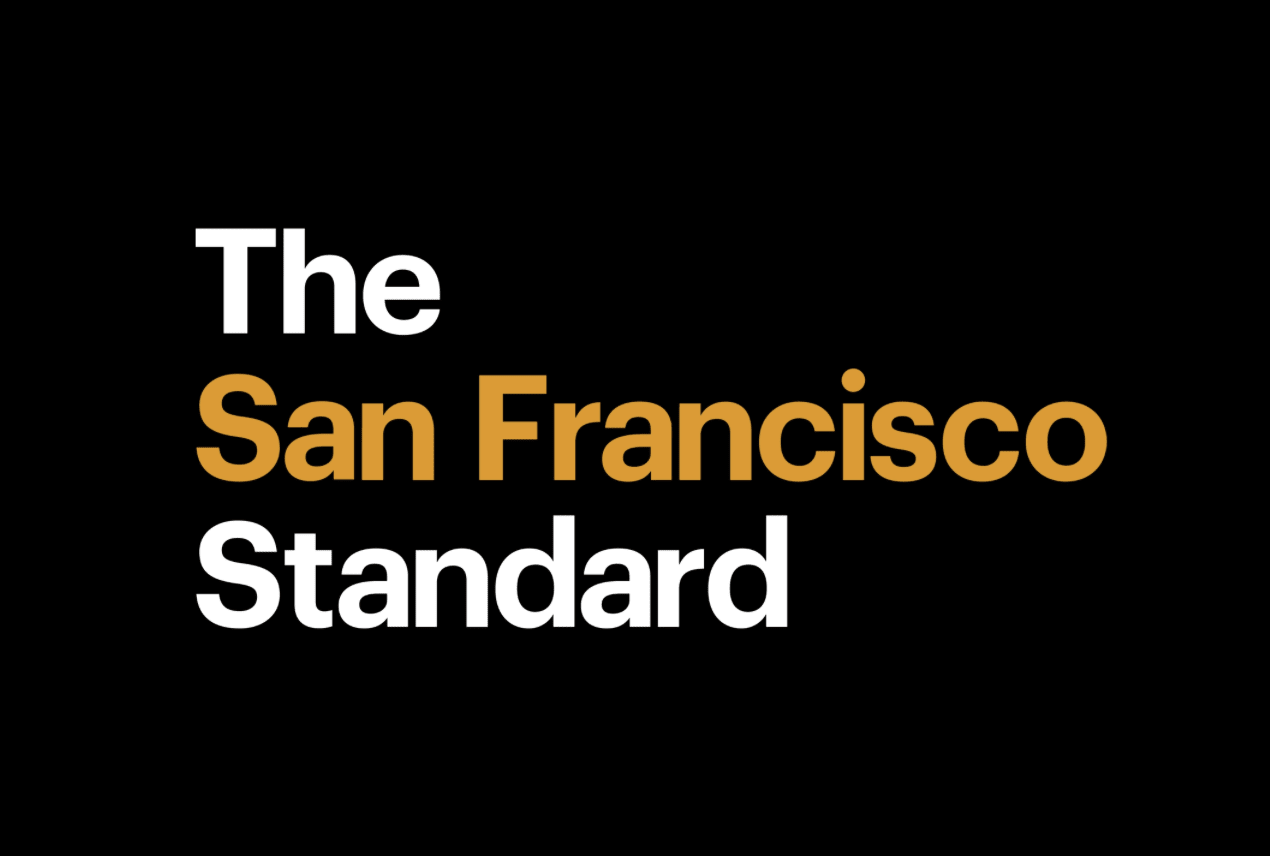
Artemis Real Estate's Insights on SF Luxury Real Estate Trends
As Featured in The San Francisco Standard
Read More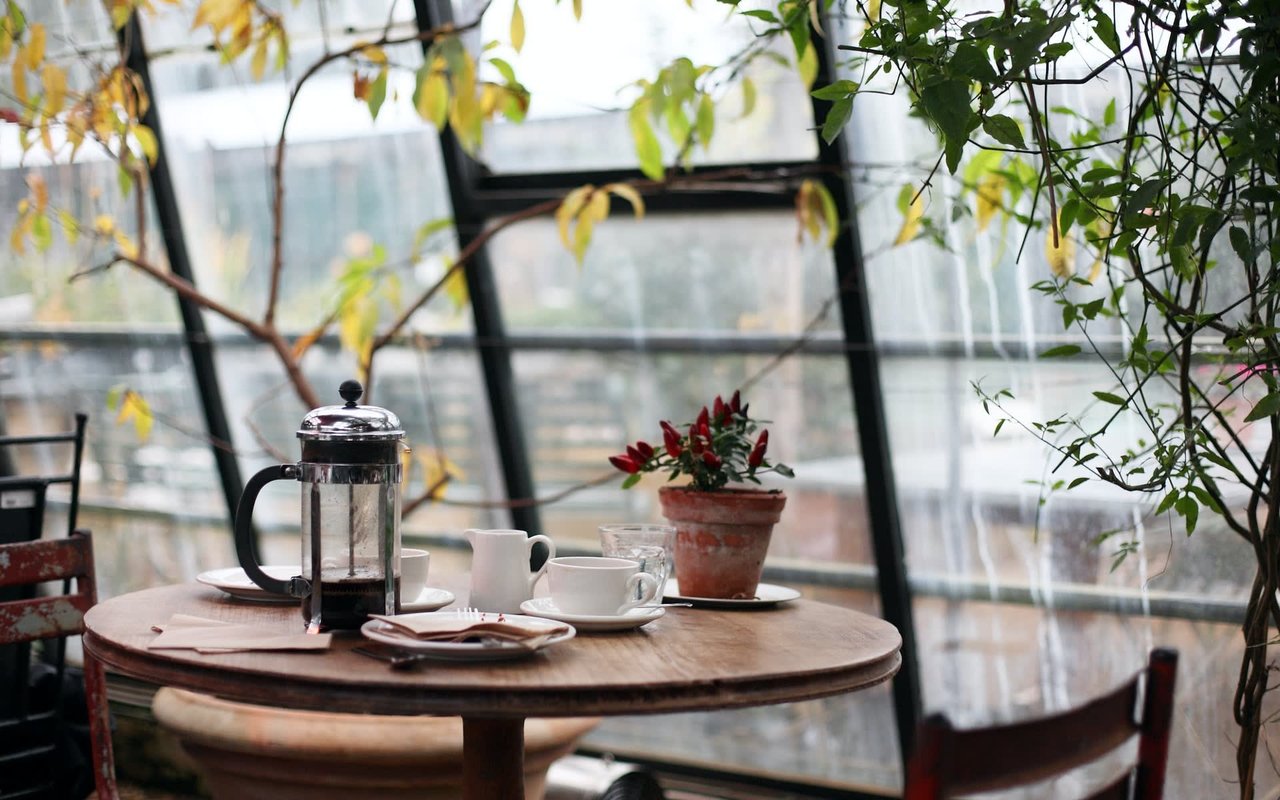
6 Cow Hollow Cafes You Won’t Want to Miss
Artemis Real Estate
From horchata cold brews to socially responsible farming and roasting, Cow Hollow ...
Read More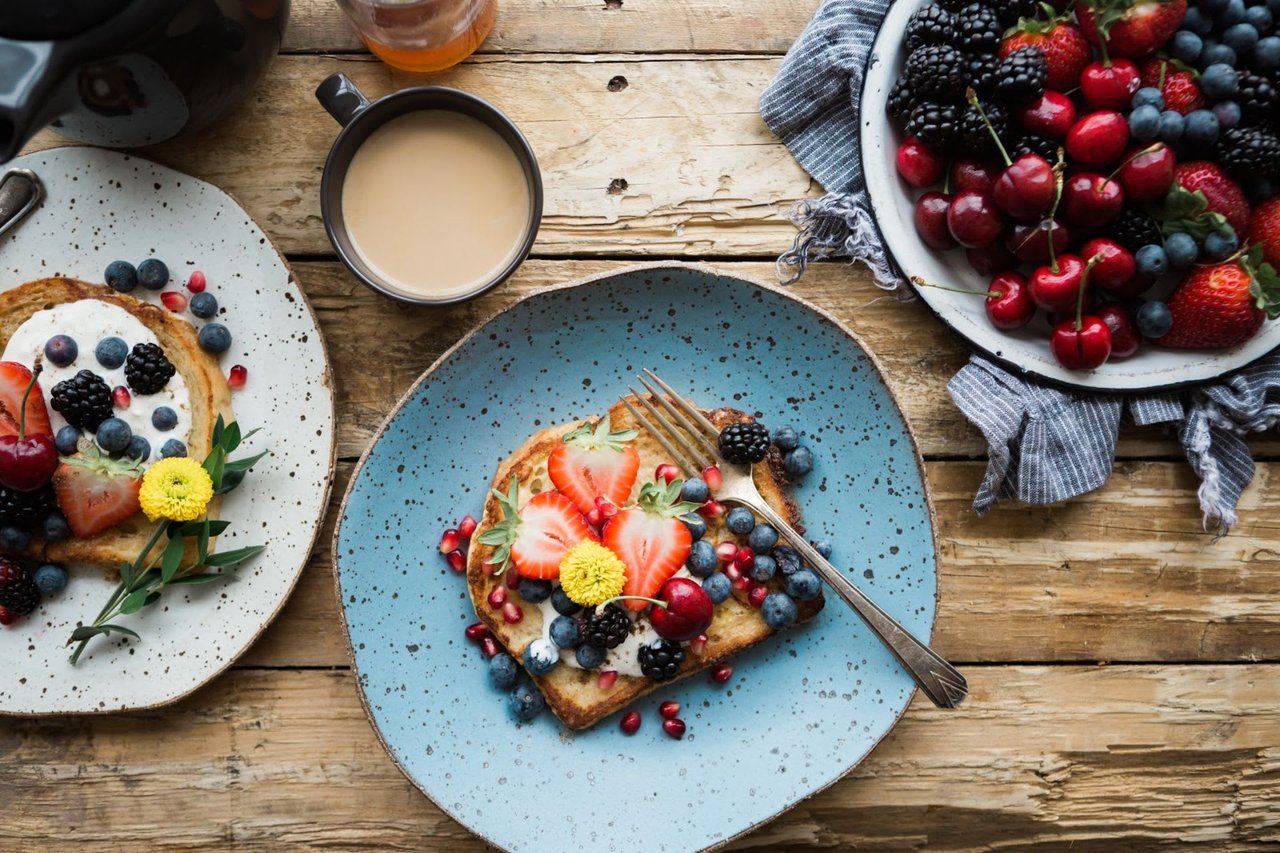
11 Best Brunch Spots in Cow Hollow
Artemis Real Estate
Check out these delicious eateries for your next weekend brunch.
Read More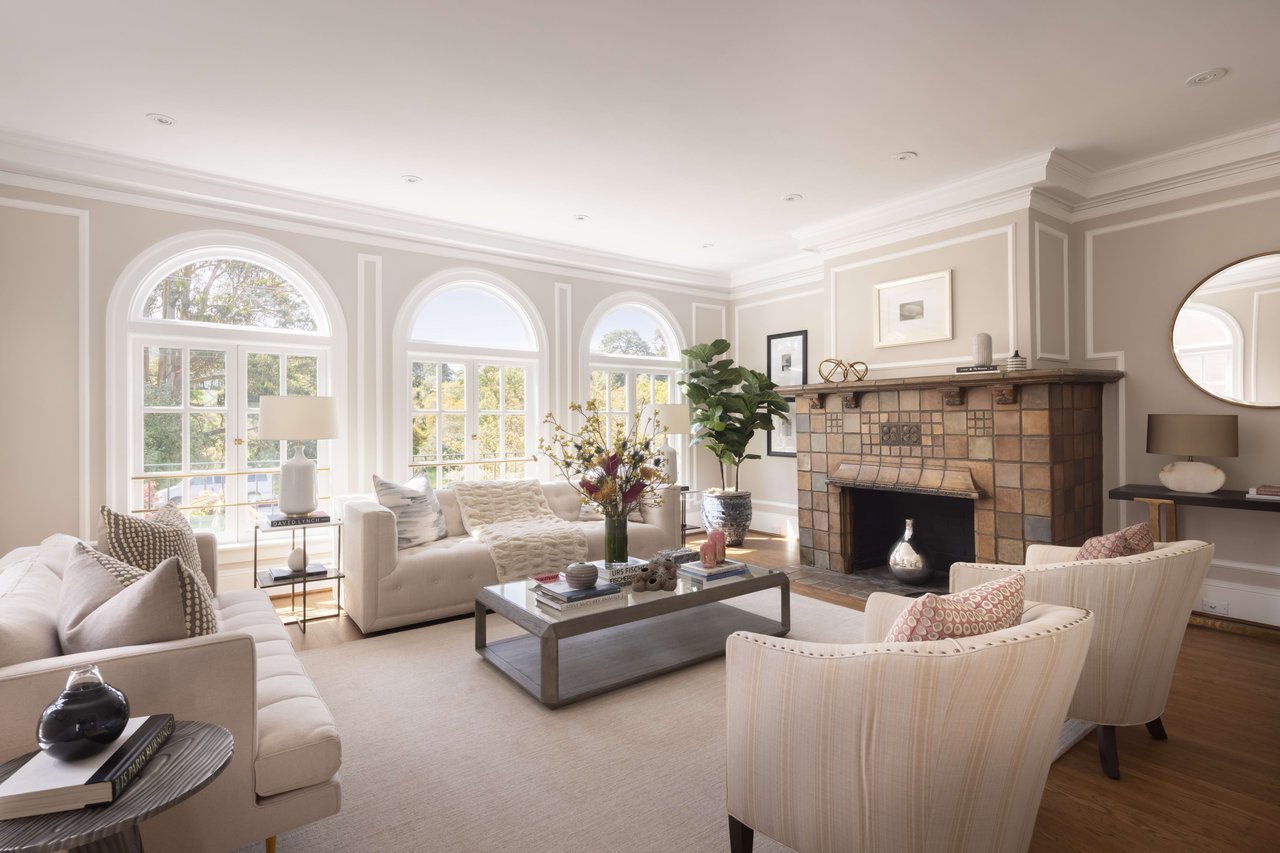
2638 Fulton Success Story
Before + After Transformation of an Inner Richmond Single-Family Home
Read More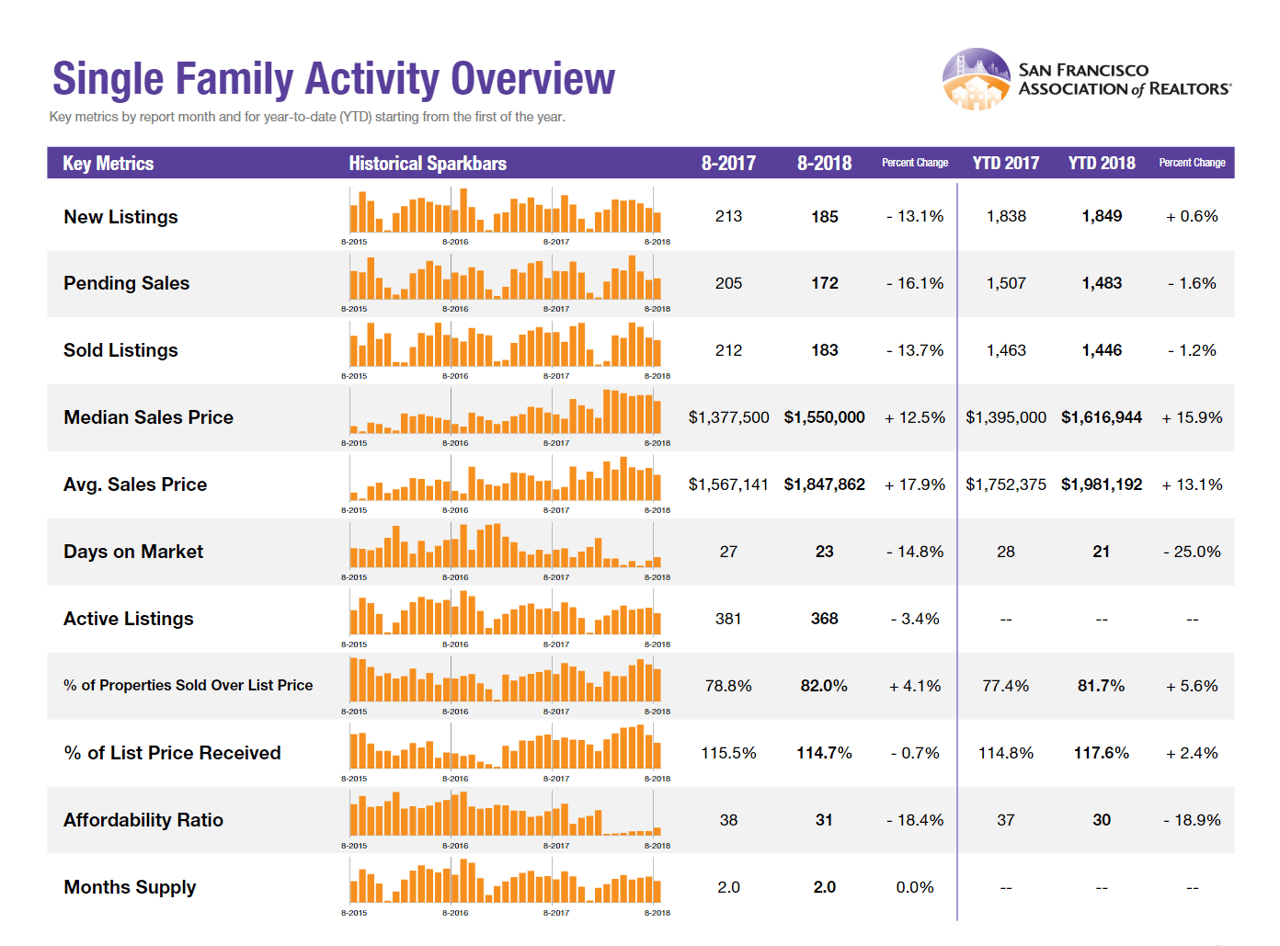
Market Focus Report August 2018
Artemis Real Estate
Rising home prices, higher interest rates and increased building material costs ha...
Read More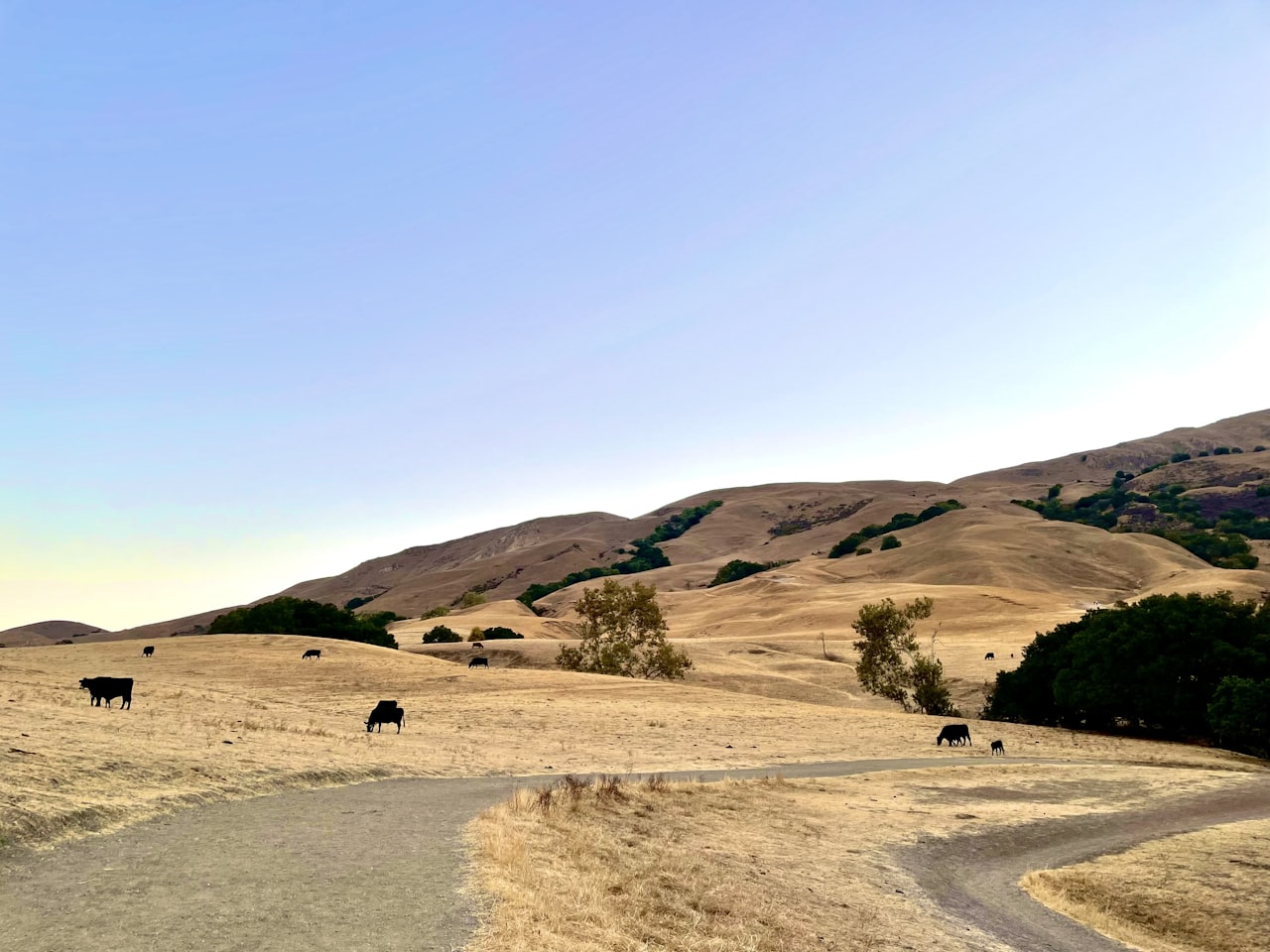
Real Estate Roundup: East Bay City Claims the Nation’s Lowest Stress Levels
Artemis Real Estate
Fremont earned the lowest score of the 300 U.S. cities included in the analysis, w...
Read More
Economic Straight Talk: Are Bay Area Housing Markets Getting the Jitters?
Artemis Real Estate
While home sales activity slowed noticeably across the Bay Area in June, increases...
Read More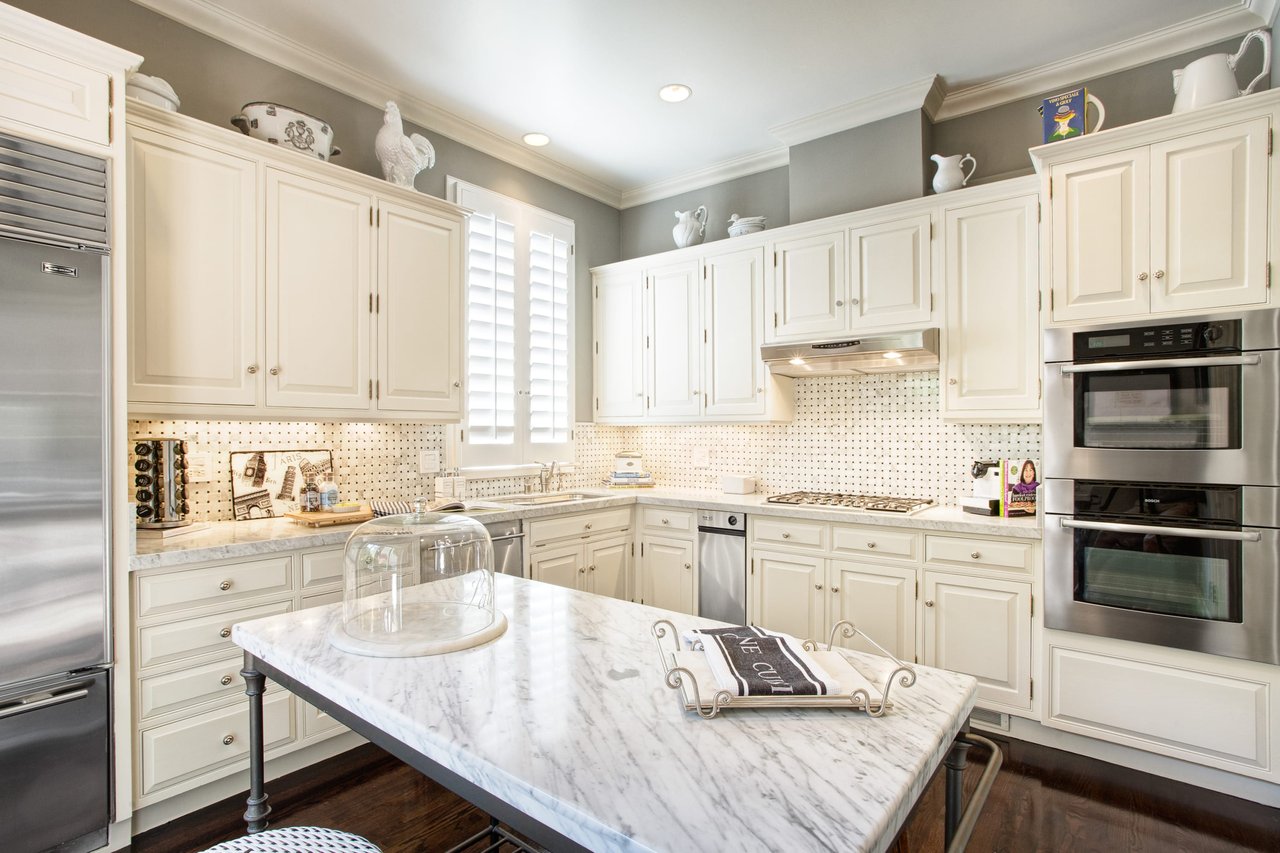
Q2 2018 Real Estate Report
Artemis Real Estate
The Mid-Peninsula, Sonoma County, Sonoma Valley, and Lake Tahoe/Truckee regions re...
Read More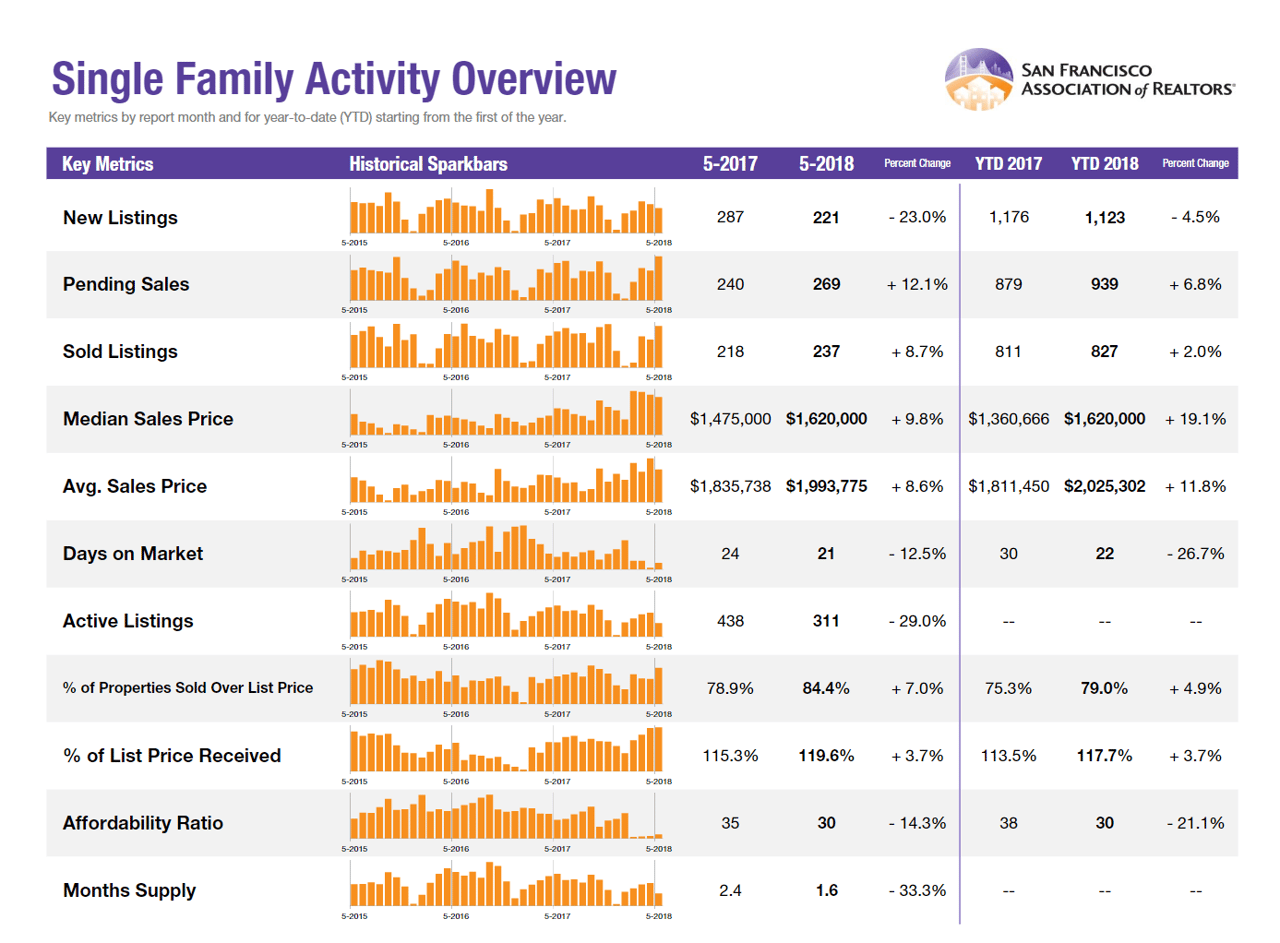
Market Focus Report May 2018
Artemis Real Estate
Just like last year at this time, prospective home buyers should expect a competit...
Read More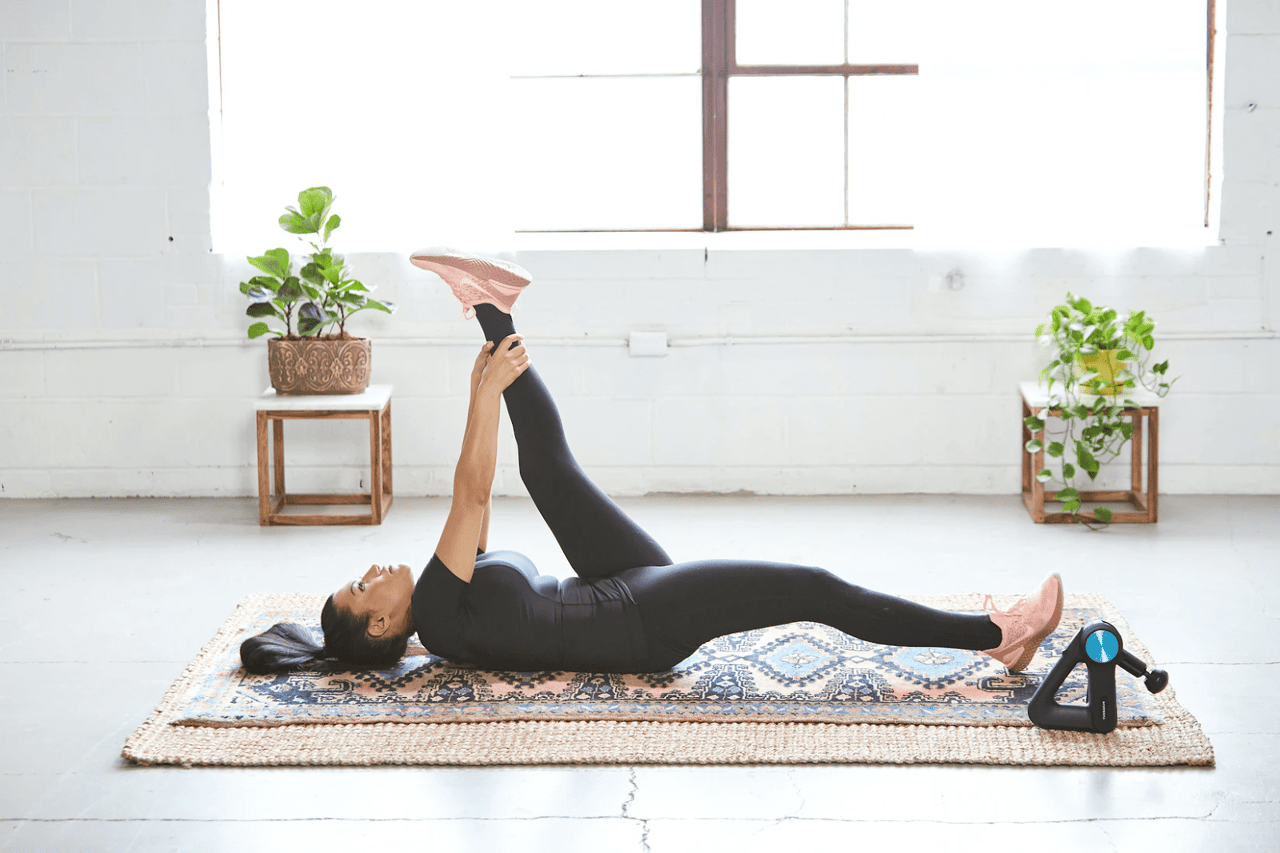
12 Ways to Stay Active During Quarantine
Artemis Real Estate
Explore ways to get your blood pumping.
Read More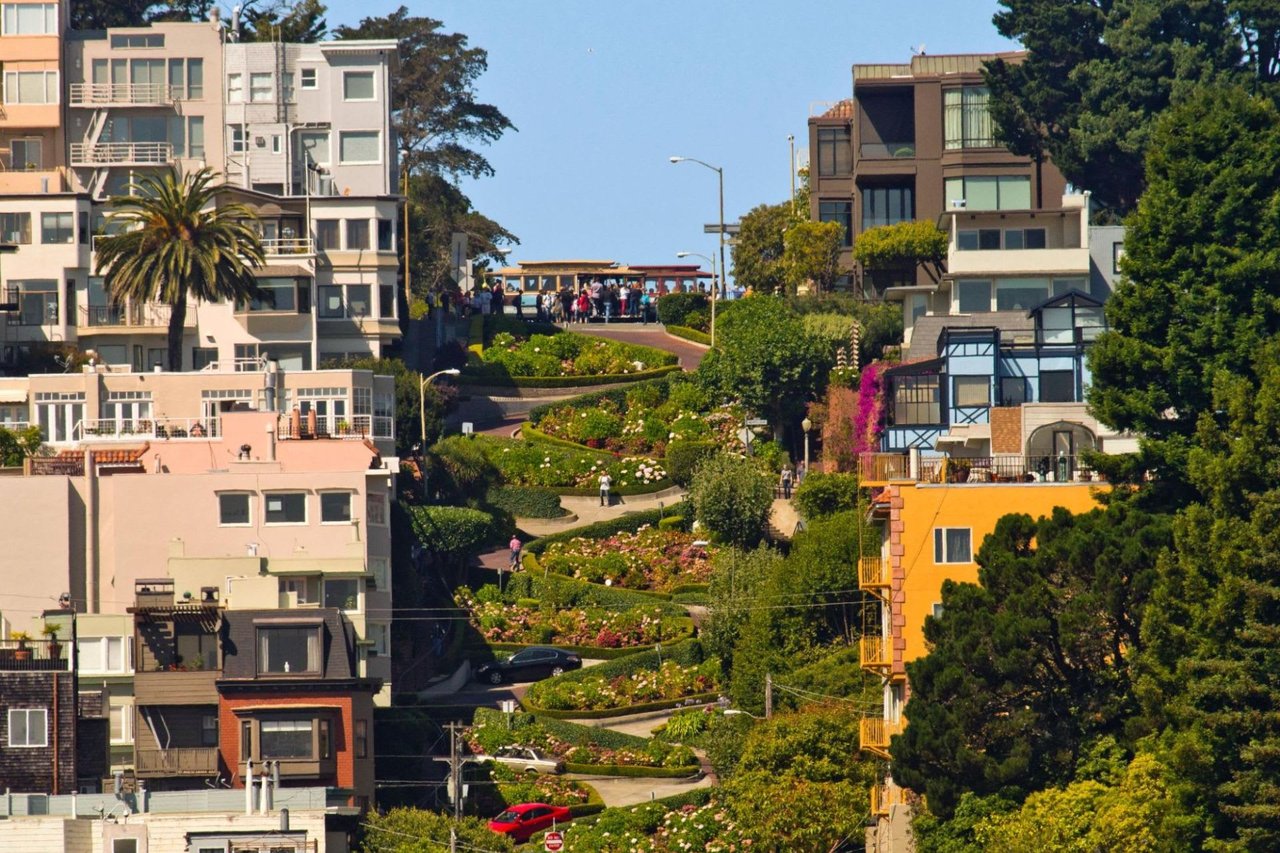
9 Reasons People Love Living in Russian Hill
Artemis Real Estate
This picturesque neighborhood has lots of exciting things to offer!
Read More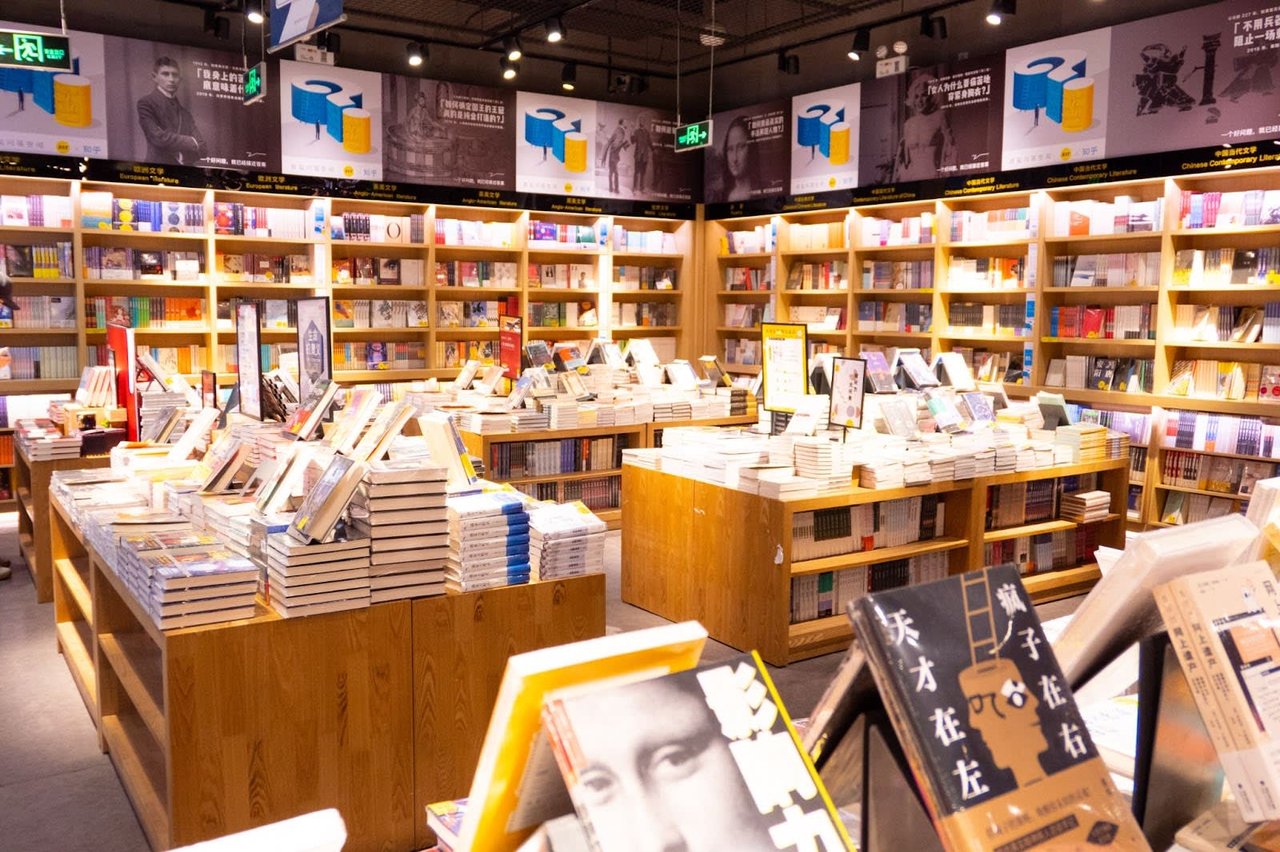
6 Best Bookstores Near Russian Hill
Artemis Real Estate
If you’re a bookworm craving a quiet corner in the Bay Area, here are six great Sa...
Read More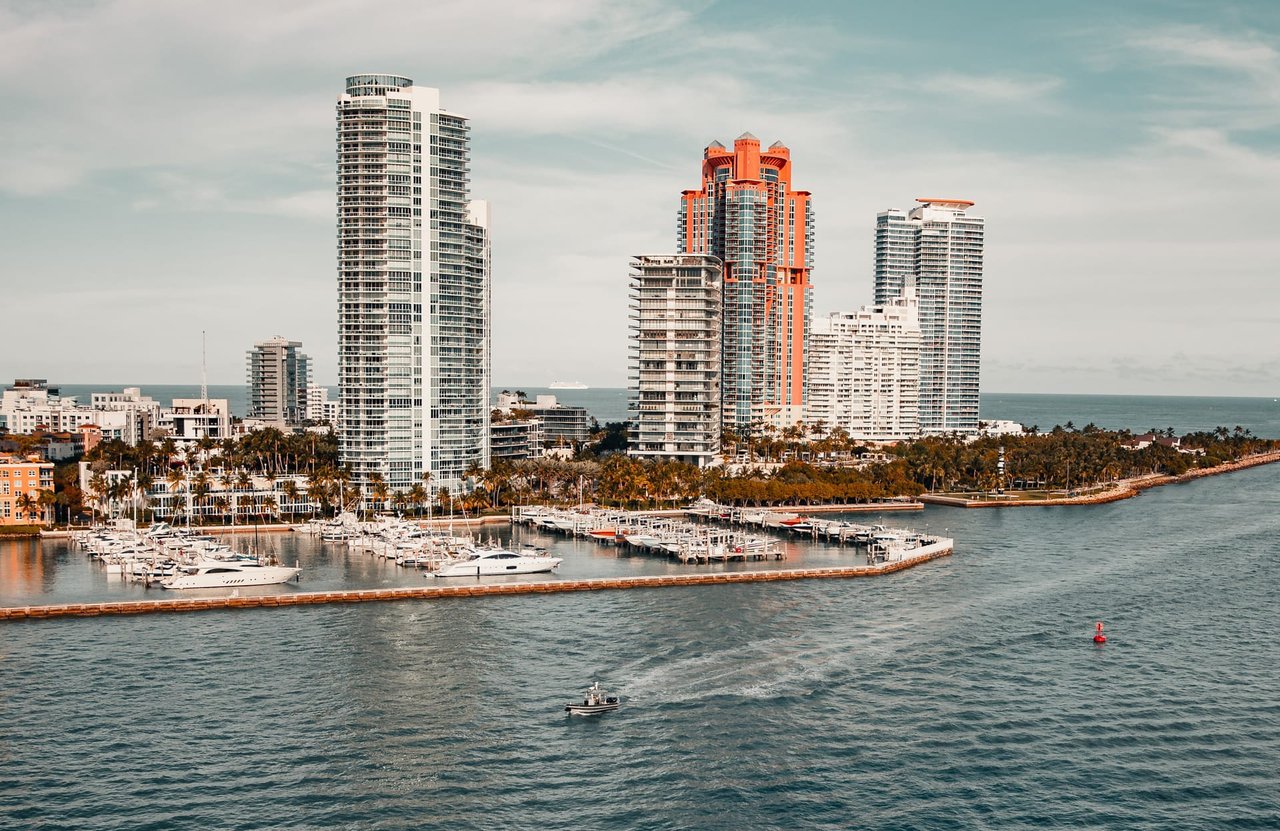
Spring Break At Your Leisure
Artemis Real Estate
Whether you're looking to move or buy a second home outside of the Bay Area, we ha...
Read More
California Coast Escapes
Artemis Real Estate
Whether you're looking to move or buy a second home outside of the Bay Area, we ha...
Read More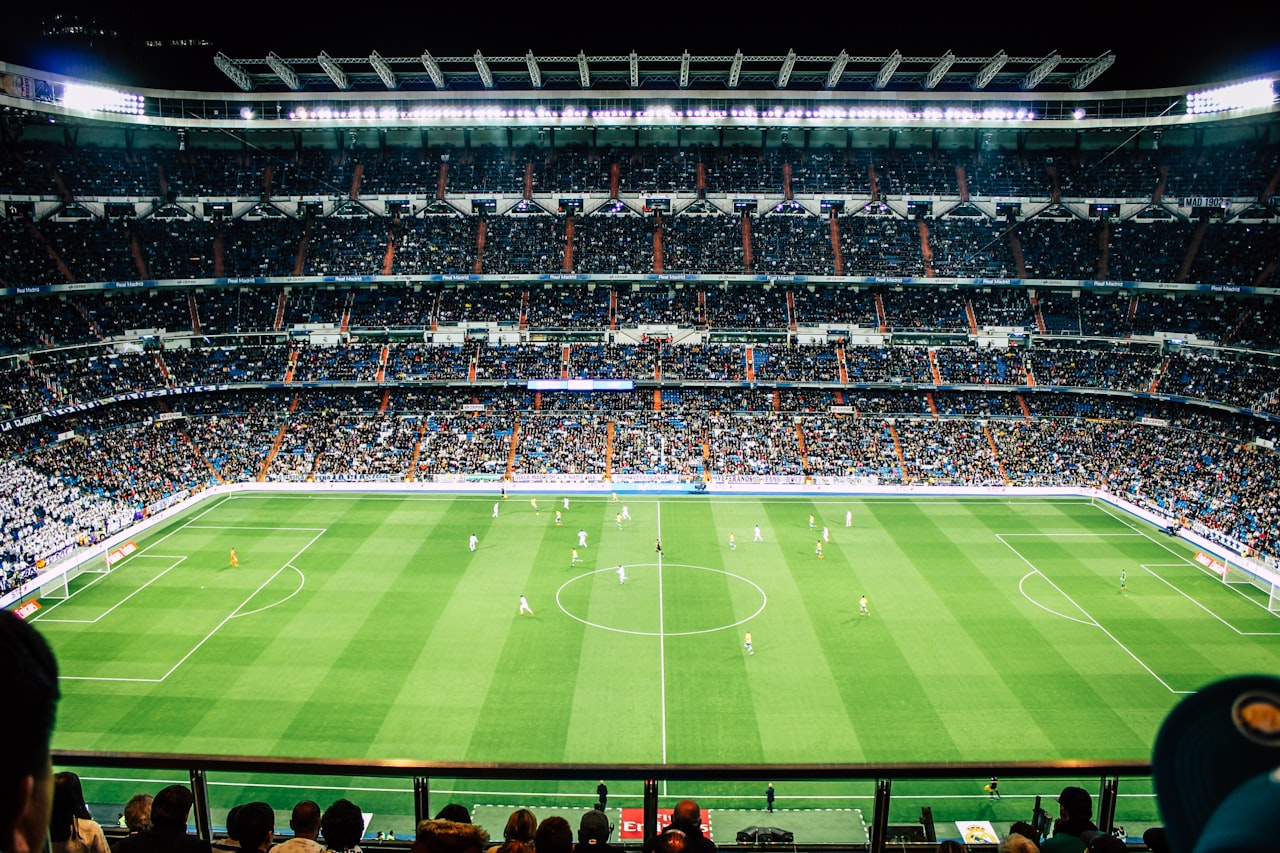
World Cup and Real Estate??
The Surprising Similarities Between the World Cup and Bay Area Real Estate
Read More